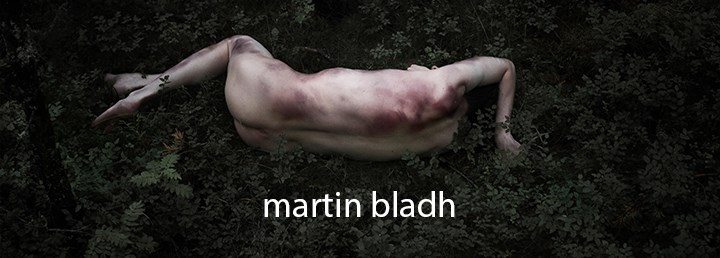
This interview was originally published in January 2017 on Terra Relicta – Dark Music Webmagazine. Tomaz has been kind enough to allow me to re-publish the interview here on This Is Darkness!
Interview with: Martin Bladh
Conducted by: Michael Barnett
Martin Bladh is a multi-faceted artist. Over his years in the public eye, Martin has worked on numerous visual, musical, and performance art projects. He entered the public realm through his power-electronics project, IRM, with Erik Jarl, and later joined by Mikael Oretoft. He would soon join forces with Magnus Lindh creating the musical force know as Skin Area. Martin has also done musical projects with Sektor 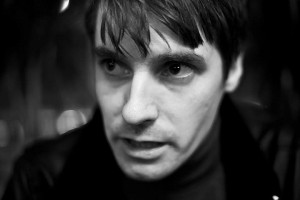 304, entitled Ruby, and with Bo I. Cavefors, entitled The Island Of Death, as well as a number of his own personal musical projects. Delving into the medium of film, Martin has created a handful of videos, many of which can be seen on the DVD accompanying Epicurean Escapism I. He also played a large part in the production of the feature film, Gasper. In the visual art world, Martin has joined forces with Karolina Urbaniak, starting Infinity Land Press. Through Infinity Land Press he has already participated in the production of a number of books, including The Rorschach Text, To Putrefaction, No Breath Of Sound – The History Of Drowning and Darkleaks – The Ripper Genome. With all these projects in the works along with more that I haven’t even mentioned, and others which haven’t yet found their way to the public eye, Martin Bladh is a very busy man. I am honored to have the multi-media artist take a little time out of his dizzying schedule to answer some questions about his art and some others which lead in a more personal direction.
304, entitled Ruby, and with Bo I. Cavefors, entitled The Island Of Death, as well as a number of his own personal musical projects. Delving into the medium of film, Martin has created a handful of videos, many of which can be seen on the DVD accompanying Epicurean Escapism I. He also played a large part in the production of the feature film, Gasper. In the visual art world, Martin has joined forces with Karolina Urbaniak, starting Infinity Land Press. Through Infinity Land Press he has already participated in the production of a number of books, including The Rorschach Text, To Putrefaction, No Breath Of Sound – The History Of Drowning and Darkleaks – The Ripper Genome. With all these projects in the works along with more that I haven’t even mentioned, and others which haven’t yet found their way to the public eye, Martin Bladh is a very busy man. I am honored to have the multi-media artist take a little time out of his dizzying schedule to answer some questions about his art and some others which lead in a more personal direction.
Michael: I have to admit from the start, I was a bit nervous to conduct this interview. So often these days in entertainment, artists follow their own path, without much attention to overarching themes or the history of art. I get the feeling when observing your various forms of art, that there is a serious depth, hidden meanings, allegories, which all need to be taken into account to fully appreciate your body of work. Do you have a formal education in the arts, or has this always been a natural passion for you?
Martin: I’m interested in the history of art, and yes, I’ve studied it at the university as well. Even though you don’t need the faculties I really believe this is something people need to know and understand, before they can call themselves “artist,” or using words such as “important,” “urgent,” “brave” or “original.” I also went to so-called art school for some years, which was, and is nothing but utter BULLSHIT that should be shunned like the plague. I’m sure that at least 95% of all this silly playground nonsense does more damage to the so-called artist to be and the art-world in whole.
Michael: Considering my previous question, do you find that fans often notice the underlying meanings?
Martin: Well, I’ve different kinds of fans. Some of my “music fans” are mainly interested in noise and the pitch of my voice. I mean if you haven’t bought the latest IRM and Skin Area CD’s, read the lyrics and looked at the artworks you have a very vague idea about the content. You can’t listen to an MP3 and experience it, that’s just impossible. Then of course you wouldn’t count as a FAN if you didn’t buy the actual record, right? Saying that, my work has a vagueness, and ambivalence to it, it points you into specific territories but it doesn’t have one specific meaning.
Michael: Are you equally happy to see fans enjoying your art, regardless of their understanding of the underlying meanings?
Martin: I don’t like laziness, which is a huge problem these days. There’s too much information out there and it’s too easy to get it; that instead of really analyse a subject people are just scratching the surface and move on to the next download. I mean, the day people will start to buy kindle art-books everything is fucked! But of course, it’s always nice to be appreciated, even if it’s only for having composed a curious tune, or a framed decorative piece of tapestry.
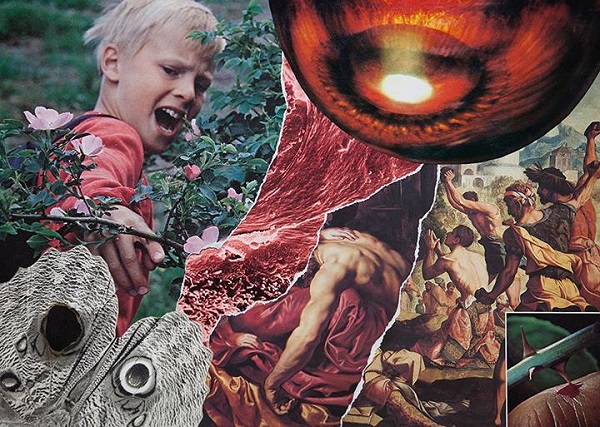
Collage Inspired by Rembrandt’s The Blinding of Samson
Michael: You have recently started a company, Infinite Land Press, with Karolina Urbaniak. Would you like to tell readers a little bit about the goals of the press and some of the recent publications?
Martin: Me and Karolina Urbaniak started Infinity Land Press back in 2013 as a means to publish our own material without having to deal with any middleman. I still lived in Sweden back then and Karolina was based in London. Our first book To Putrefaction (2013), a romantic ode to death and decay, was strictly limited to 50 copies. We then got the idea to publish books with other artists that we admired, such as Dennis Cooper, Michael Salerno and most recently Philip Best, and collaborations between ourselves and other artists – Karolina did Altered Balance with Jeremy Reed and The Void Ratio with Shane Levene, and in the beginning of 2017 me and Jeremy Reed’s book Darkleaks – The Ripper Genome was released. We usually deal in strictly limited editions because that’s what we can afford and stock in our office (which is our living room), and we’ll continue to publish as long as we find material that’s interesting enough. Our credo: Infinity Land is a realm deeply steeped in pathological obsessions, extreme desires, and private aesthetic visions. Having disappeared over the horizon from the nurseries stocked with frivolous babblings of apologetic pleasures, Infinity Land is foundationally a geography configured by the compulsive, annihilating search for impossible beauty.
“True beauty is something that attacks, overpowers, robs, and finally destroys.”
Yukio Mishima
Michael: As I’ve already alluded to, your artistic vision is truly multi-faceted. You have released everything from books, to DVDs, to albums. You have also done some stage shows which combine aspects of all these projects. Can we look at your entire body of work as part of a whole? Is there an over-arching vision which anchors all these ideas into one central theme?
Martin: I like the Wagnerian idea of the Gesamtkunstwerk, where different artistic media bleed together into one synthesis. It might be a weakness, but I’ve never felt satisfied by expressing myself through a single media, and I’ve vivid memories of the suffocating frustration that I went through from the period 1998 – 2003, when sounds and lyrics was my only outlet. The multimedia expression has become an absolute necessity for me, if you read my books DES and The Hurtin’ Club you know what I mean. And yes, every new project I do has a specific content which I try to filter through these various medias.
Michael: Out of all your musical output over the years, I was the most intrigued by your work on Ruby with Sektor 304. The vocal style was totally different than I had experienced on IRM or Skin Area albums. I wonder if you could give us some insight into that album? How it came about as a collaboration between you and Sektor 304. Also, I wonder what your connection is to the character named Ruby, the main focus of the album.
Martin: I’m glad to hear you saying that as I believe it to be highly underrated. The Sektor 304 guys contacted me back in 2012, and wanted me to send them a guest recording for a live broadcast they were doing for the Portuguese radio. When I heard the result I was very pleased and asked them if they wanted to collaborate with me on an album. I remember making clear from the start that this would be something different from what I’ve been doing with IRM and Skin Area, and the guys were very sympathetic and excited about that. The whole narrative and background story of Ruby (the name’s got an alchemical inclination) came out of a clinical study from the late 50ties, about art therapy and schizophrenia which I’ve read. It was based on dialogs between a psychiatrist and patient, how the patient’s explained his painting for the psychiatrist and the interpretation process involved. I kind of re-wrote this material for my own purpose, which (obviously) took it into even darker territories, and that was the birth of the androgynous Ruby.
Michael: I had the pleasure of witnessing an IRM performance last year, on the APEX Fest Tour. The performance was magnificent. You had an extremely theatrical stage presence, which seemed almost choreographed, everything from your facial expressions to body positioning, and the handling of the two microphones. Do you put a lot of preparation into your live sets for all your projects or was this a natural presence which just seemed to be calculated?
Martin: Nothing I do on stage has been prepared or choreographed beforehand; but I’ve done these performances for quite some time now; so I might rely on my body memory. The only so called “preparation” I do is to drink, and let the alcohol sensation peak when I go on stage, I guess it’s somewhat similar to an Dionysian frenzy, and I really work myself up when I’m up there; so I’m not really aware of my body postures or facial expression until watching the reproduction of the show afterwards (which I do very seldom).
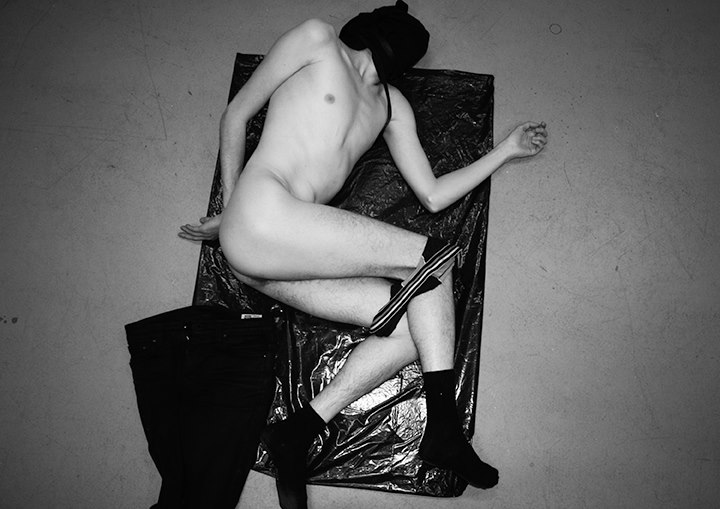
from DES: Sad Sketches
Michael: Continuing on the topic of the APEX Fest, I was delighted to read in the “Through My Eyes” article (you can read that article here) on Santa Sangre Magazine: “Any moment of 2015 you’ll remember on your death bed? The city of Baltimore. I never seen anything like it in the western world. A hellhole. Amazing.” Obviously, coming from Baltimore, I found this remark quite interesting. Baltimore, as with much of the United States and Europe, is currently undergoing a lot of social changes and realizations. I would be interested if you could take that previous statement into a bit more detail, and describe to the readers exactly what you found so different about Baltimore.
Martin: Ha, ha, well I guess that statement was a bit unfair, cause I only saw some of the roughest parts of the city, which actually reminded me of photographs of Berlin 1945, with whole building blocks caving in on themselves. I know there’s another side to the city as well, but I never seen anything like it neither in Western nor Eastern Europe. I remember asking the organiser for a pharmacy and she told me there was one just a couple of hundred meters away, but to get there I should take cab because otherwise it might be too dangerous.
Michael: In 2014, your most enduring musical project, IRM released Closure… through Malignant Records. You also released the track, “Triptych”, which is a sort of crash course of the whole trilogy which included: Indications of Nigredo, Order4 and Closure… Since finalizing this chapter of IRM, have you begun to work on something new, or is IRM currently on hold as you guys focus on other projects like Skin Area, Jarl, and Infinity Land Press?
Martin: IRM haven’t worked on any new material since finalising Closure… , and I’m not sure when we’ll start again. Everything is a bit more complicated since I moved to London and the other two guys are still in Sweden (living in different cities). Our records are recorded and put together very carefully, and the process of making the last two full length albums was very time consuming. Me and Magnus are actually in the process of putting together a new Skin Area record though, and we work on it every time I visit Sweden.
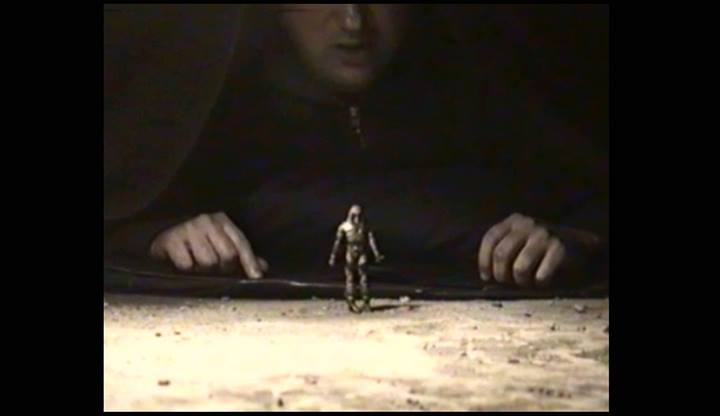
from Gasper
Michael: I recently reviewed the Pale Thorns debut album, Somberland. Pale Thorns is a solo-project by Magnus Lindh, the other half of Skin Area. When I spoke with Magnus, he mentioned that you had looked over his lyrical content on the album. We both agreed that your lyrics are totally unique and deliver extremely powerful imagery. I wonder if you can think back to when you first started writing lyrics. Were you a child when you first put the pen to paper, or did this come later in life as you started IRM with Erik?
Martin: As a kid I had a very vivid imagination, but I was more keen on drawing than writing. It was back in 1992 that I made my first attempts to write – coloured by the second wave of Black Metal – and from what I remember, they were hideously bad. It was later when I started to nurture a genuine interest in literature that something happened. Oedipus Dethroned (2000) would probably be the first serious example of some kind of craft.
Michael: Which writers or filmmakers have been the most influential on you throughout your life? Has this list changed much over the years as you have become an adult?
Martin: As a child I was obsessed with comic book- and James Bond villains, the only “books” I ever read were things like Flash Gordon. When I was a bit older I discovered H.P. Lovecraft and horror films. Then writers like Sade, Burroughs, Lautreamont and Mishima together with filmmakers like Stanley Kubrick, David Lynch and Pasolini turned everything topsy turvy. And then as an adult, “mature” man, I might settle for writer such as Antonin Artaud, Georg Trakl and Jean Genet, and as for film Ingmar Bergman, Fassbinder and Michael Haneke.
Michael: Sweden seems to be a place where so much unique talent enters the public realm, especially when it comes to the darker side of media. What do you think it is about Sweden which produces such dark and introspective artists?
Martin:That’s what an outsider sees when he scratches the surface, dig a little deeper and you’ll find that most of it is rather harmless and PC, filled with individuals who have a morality quite similar to your own mother’s. But yes, there are a lot of acts that originate from Sweden, and some of them are really good. A lot of it might have to do with luxury angst; to live in a safe and pampered society might give you a desire for controlled danger as spice to the boredom of everyday life. Then when it comes to medias such as literature, film or conceptual and visual art the country is a desert – total shite that is.
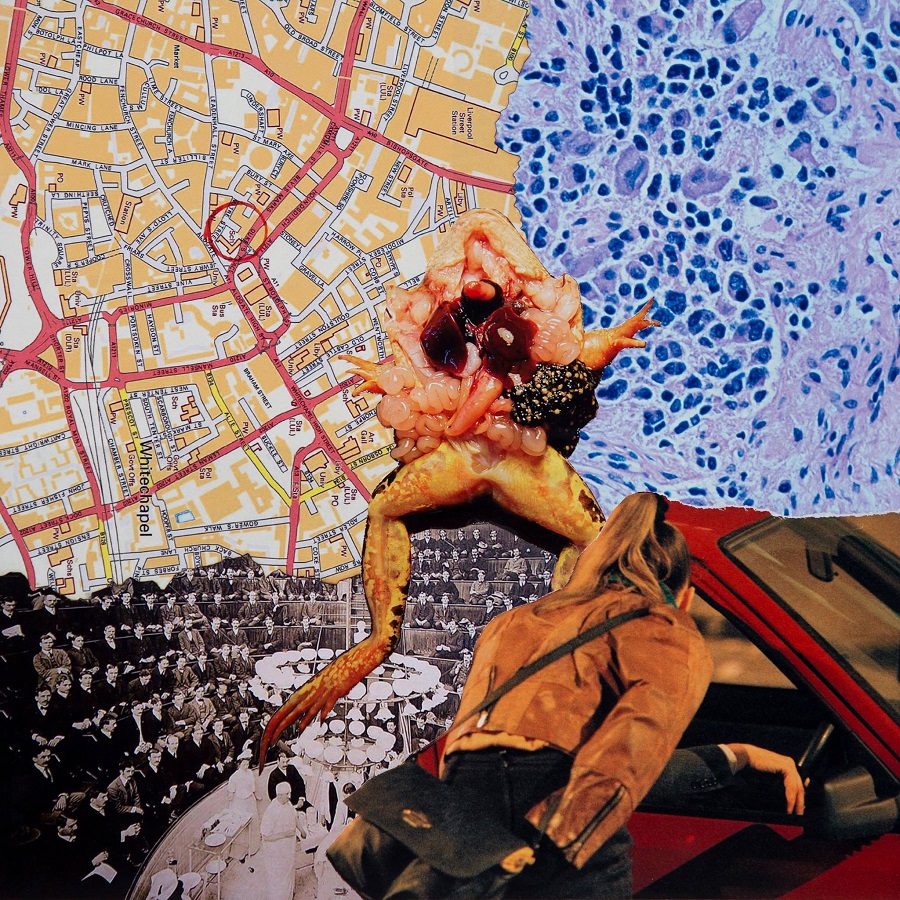
from Darkleaks – The Ripper Genome
Michael: You have since relocated to London, is the U.K. a more fitting home-base for your operations?
Martin: I’m closer to Karolina, and it’s of course much easier to run Infinity Land Press from here. I have two day jobs and I’ve never worked as much as I do now, but because of that I’m pricing the time I spend on my “real” work much higher.
Michael: Do you think the apocalypse is coming, if so how do you think it will happen?
Martin: Some kind of apocalypse is coming our way, but even the apocalypse isn’t the end…
Martin Bladh links: Official website, Infinity Land Press website, Infinity Land Press Facebook, IRM Facebook, Skin Area Facebook


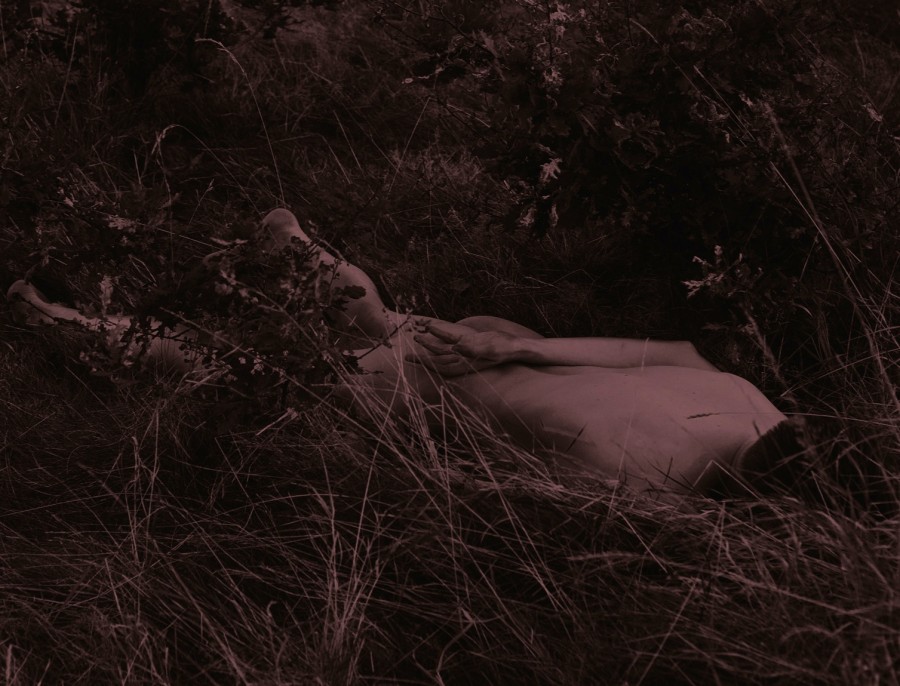
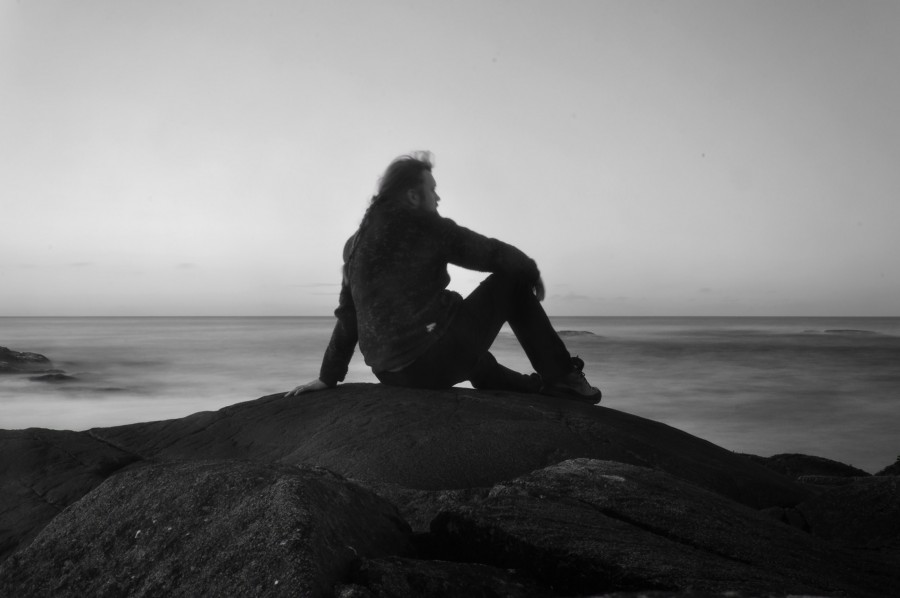

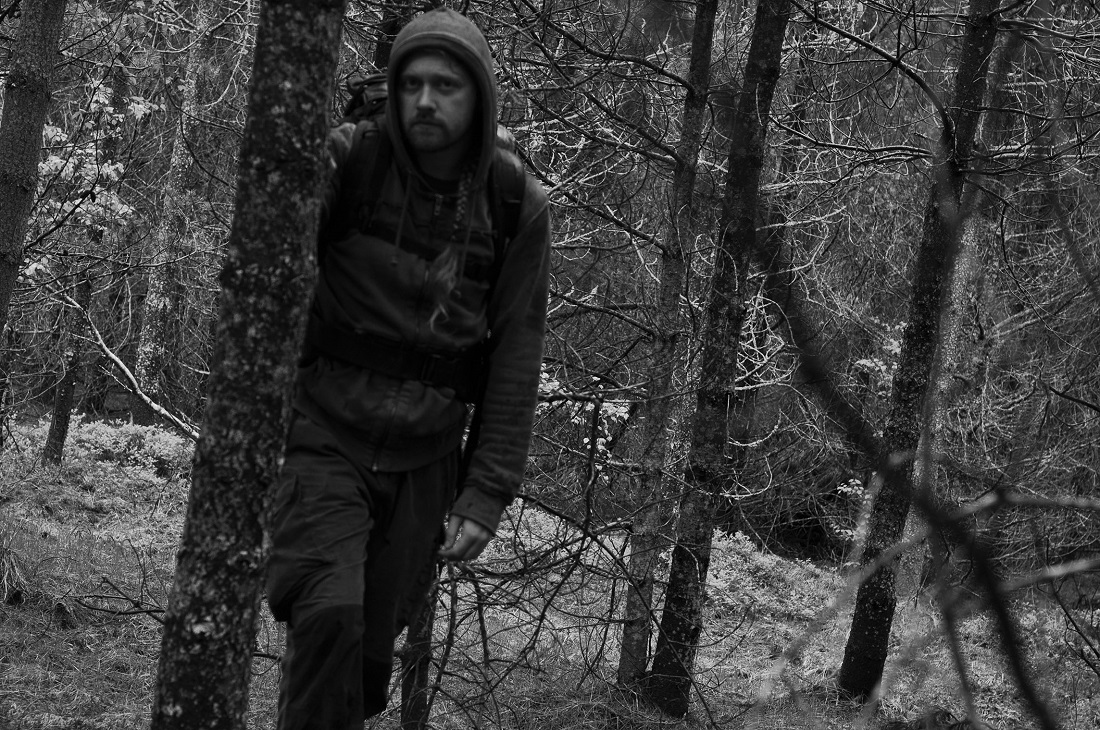
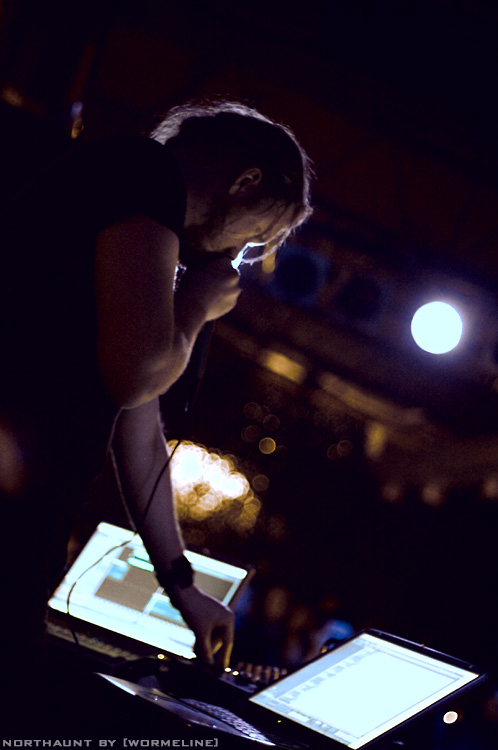
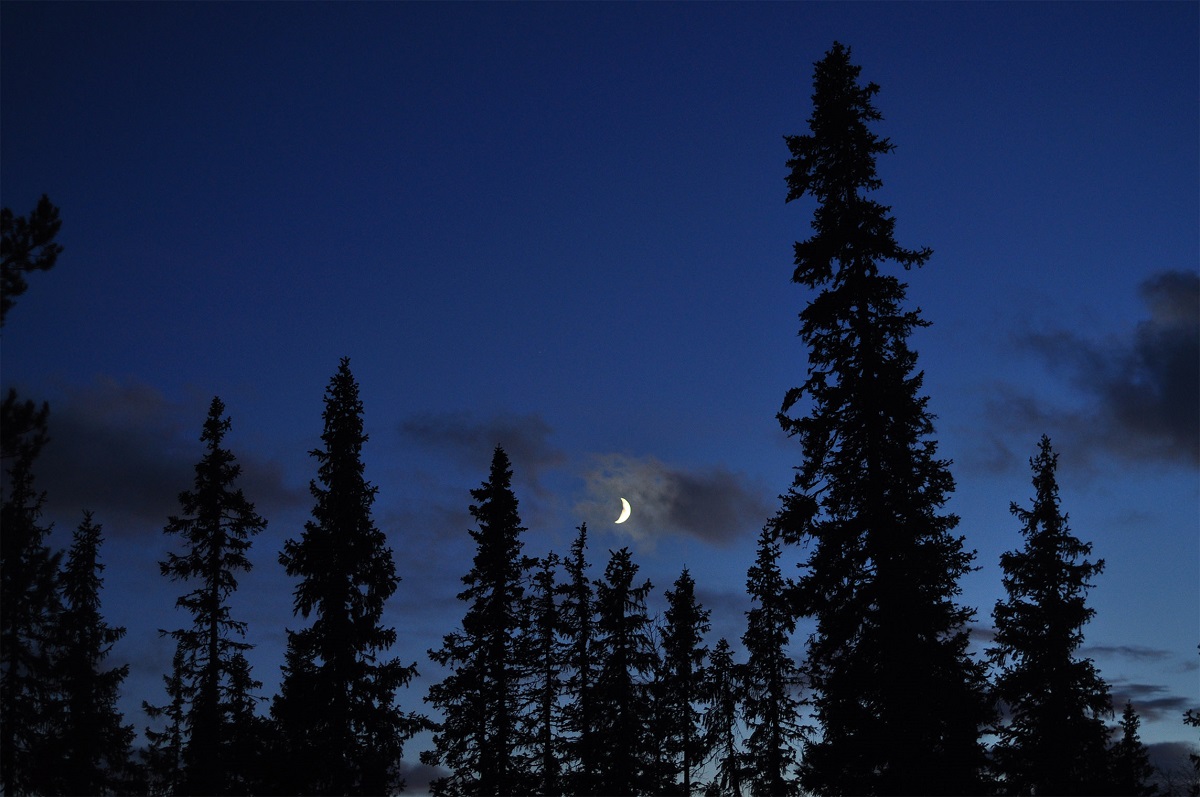
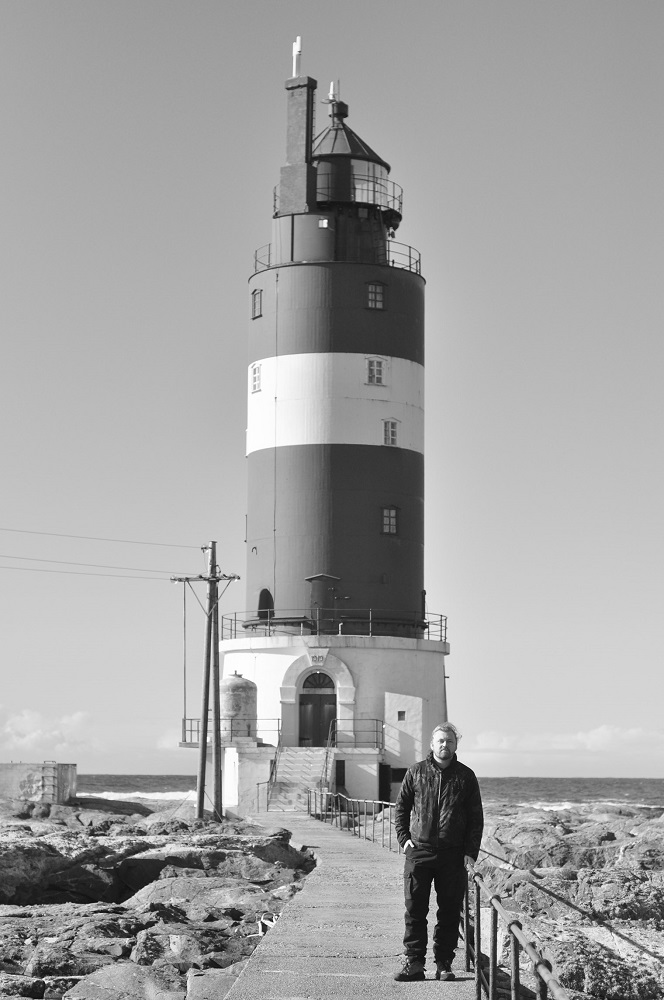
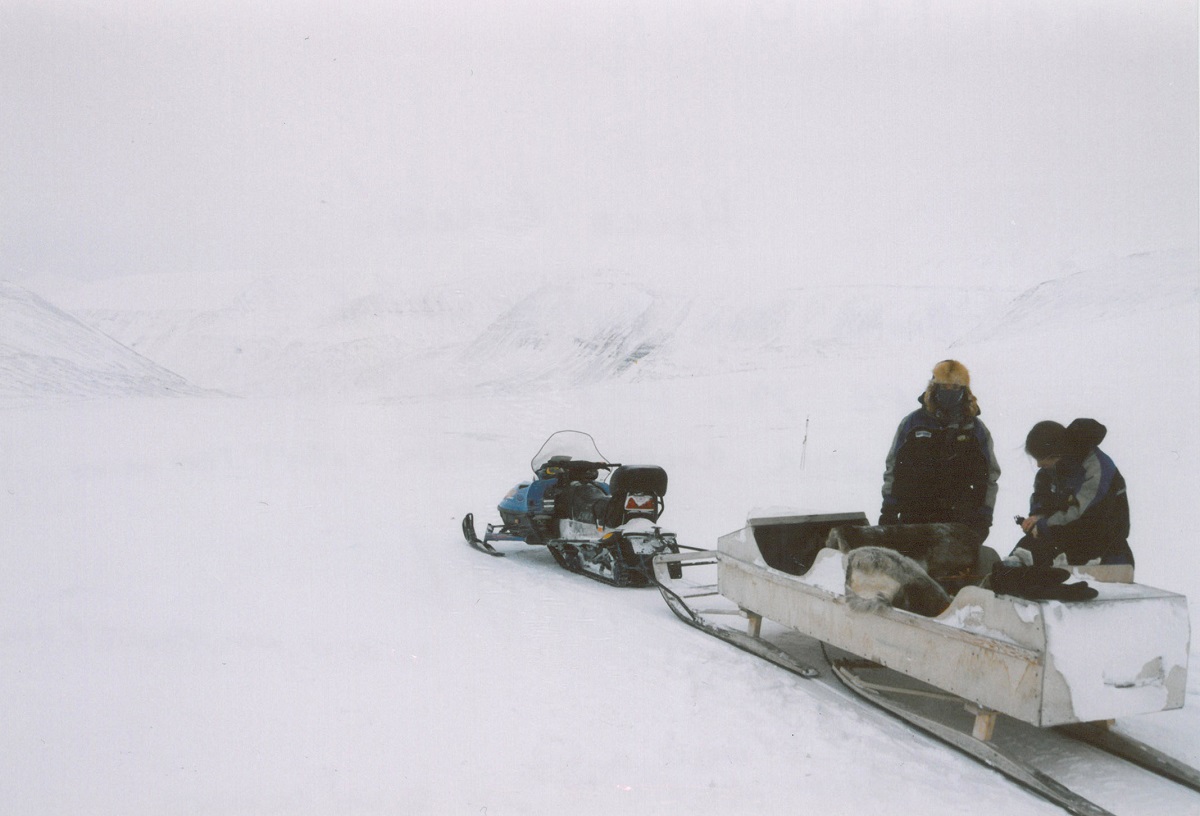
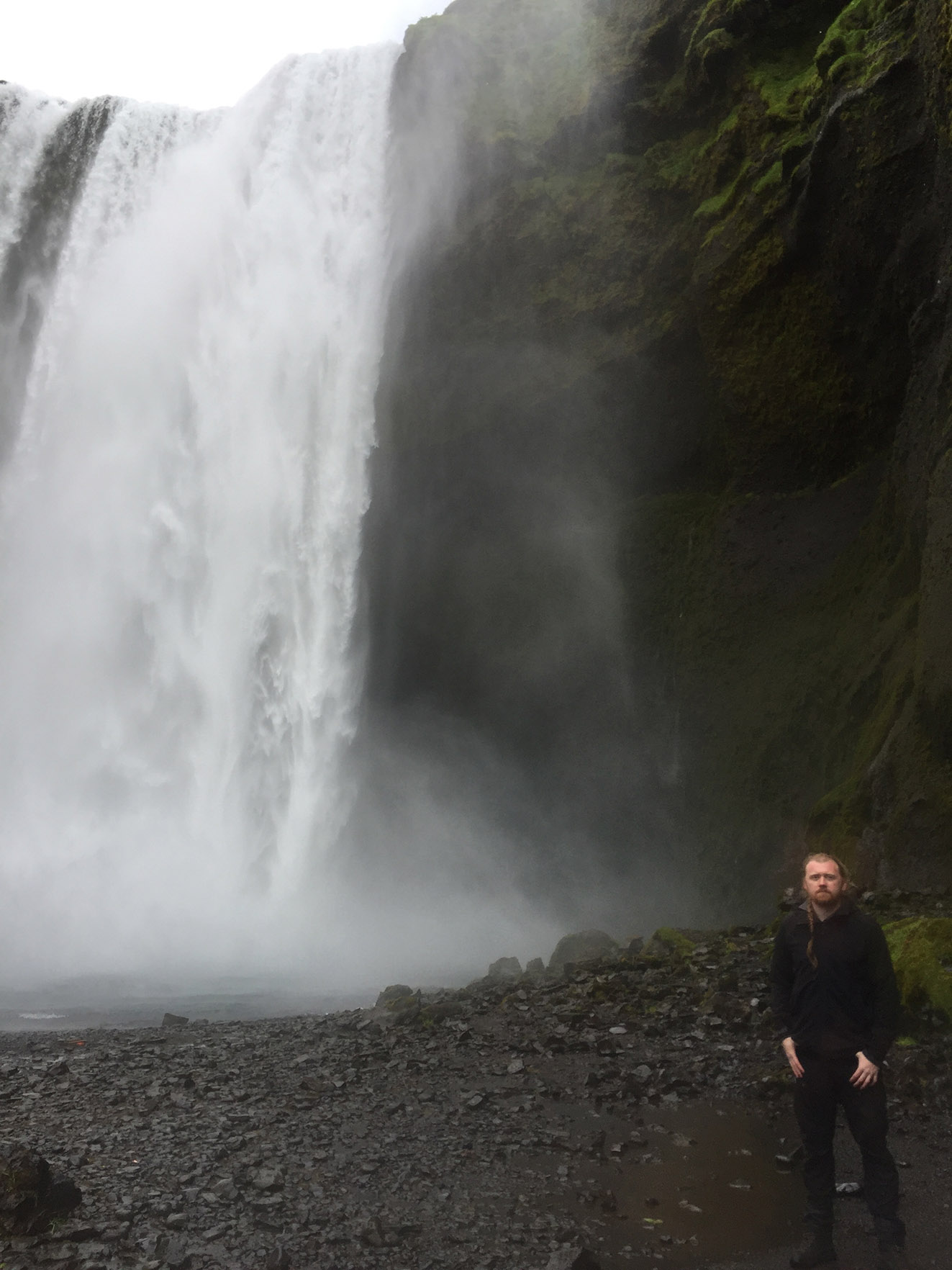
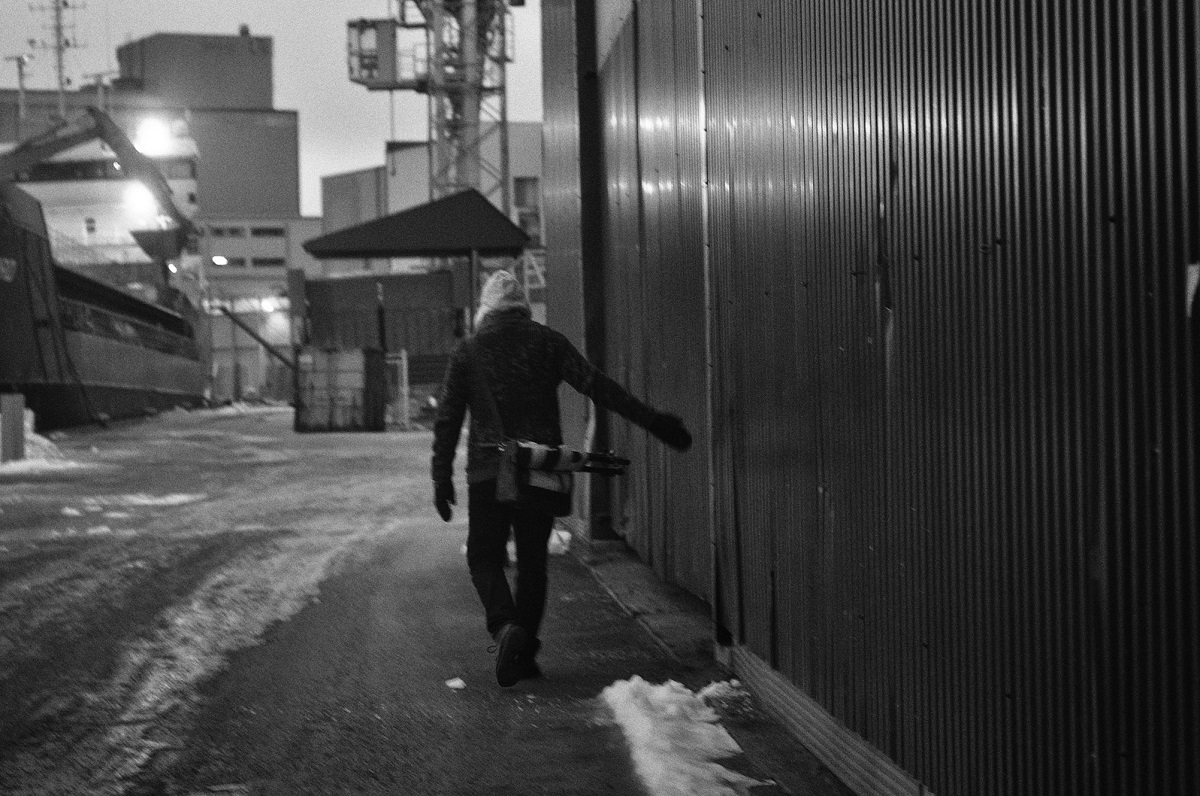
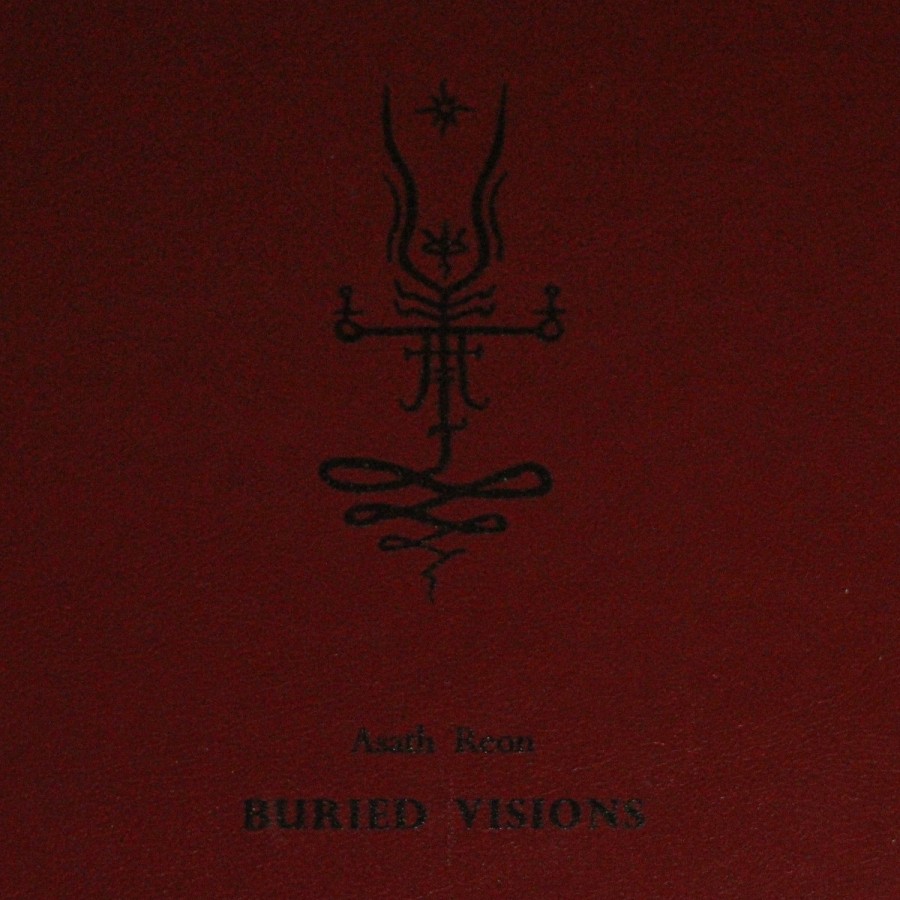
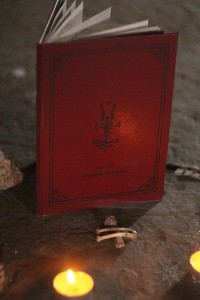 Michael: How long have you been into ritual/dark ambient music?
Michael: How long have you been into ritual/dark ambient music?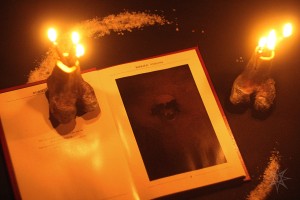 Michael: Is there a particular meaning behind the name Asath Reon?
Michael: Is there a particular meaning behind the name Asath Reon?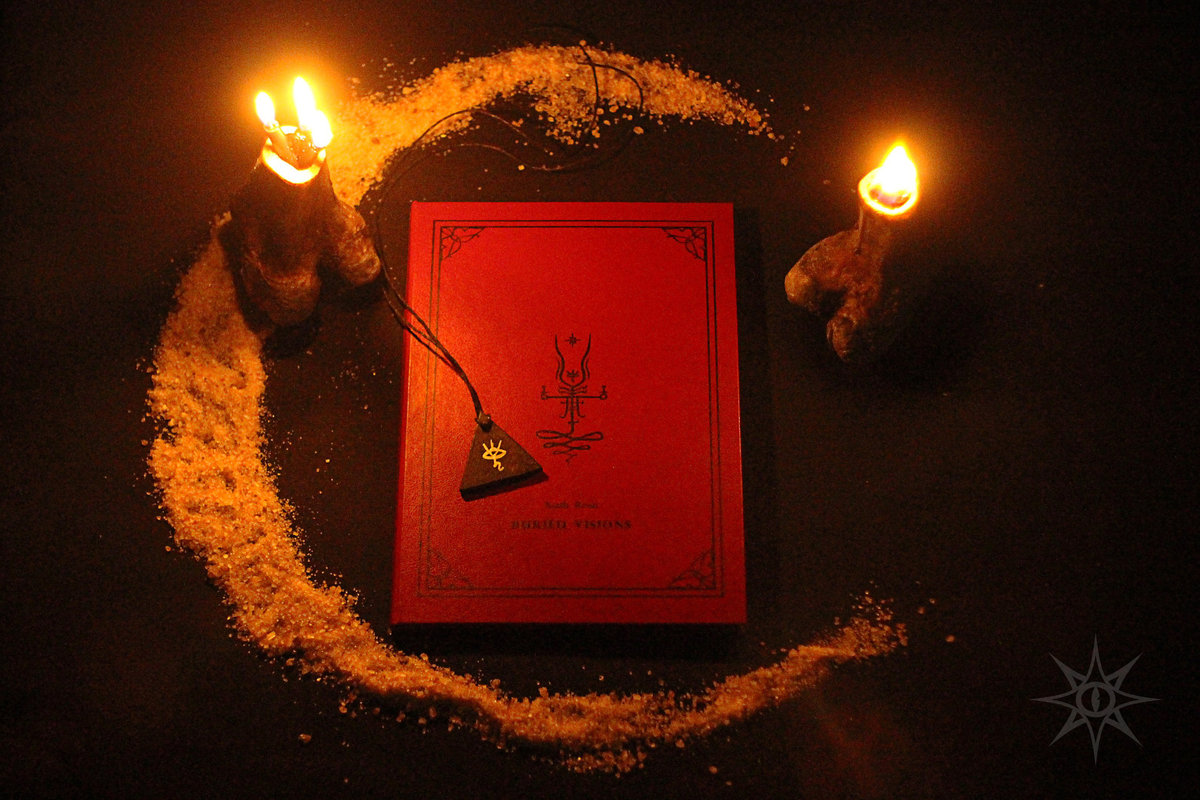
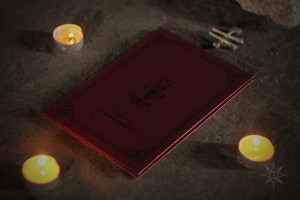 Asath Reon: This is very subjective, but worth trying at least one time is in the woods, or in a calm enviroment at night, in a calm state of mind, with concentration and with a good set of headphones.
Asath Reon: This is very subjective, but worth trying at least one time is in the woods, or in a calm enviroment at night, in a calm state of mind, with concentration and with a good set of headphones.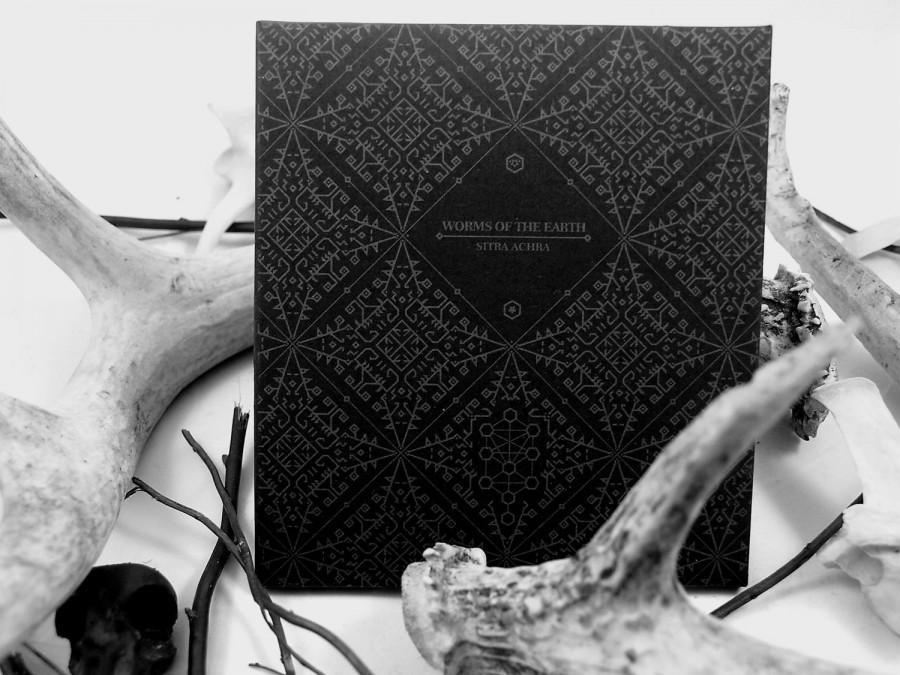
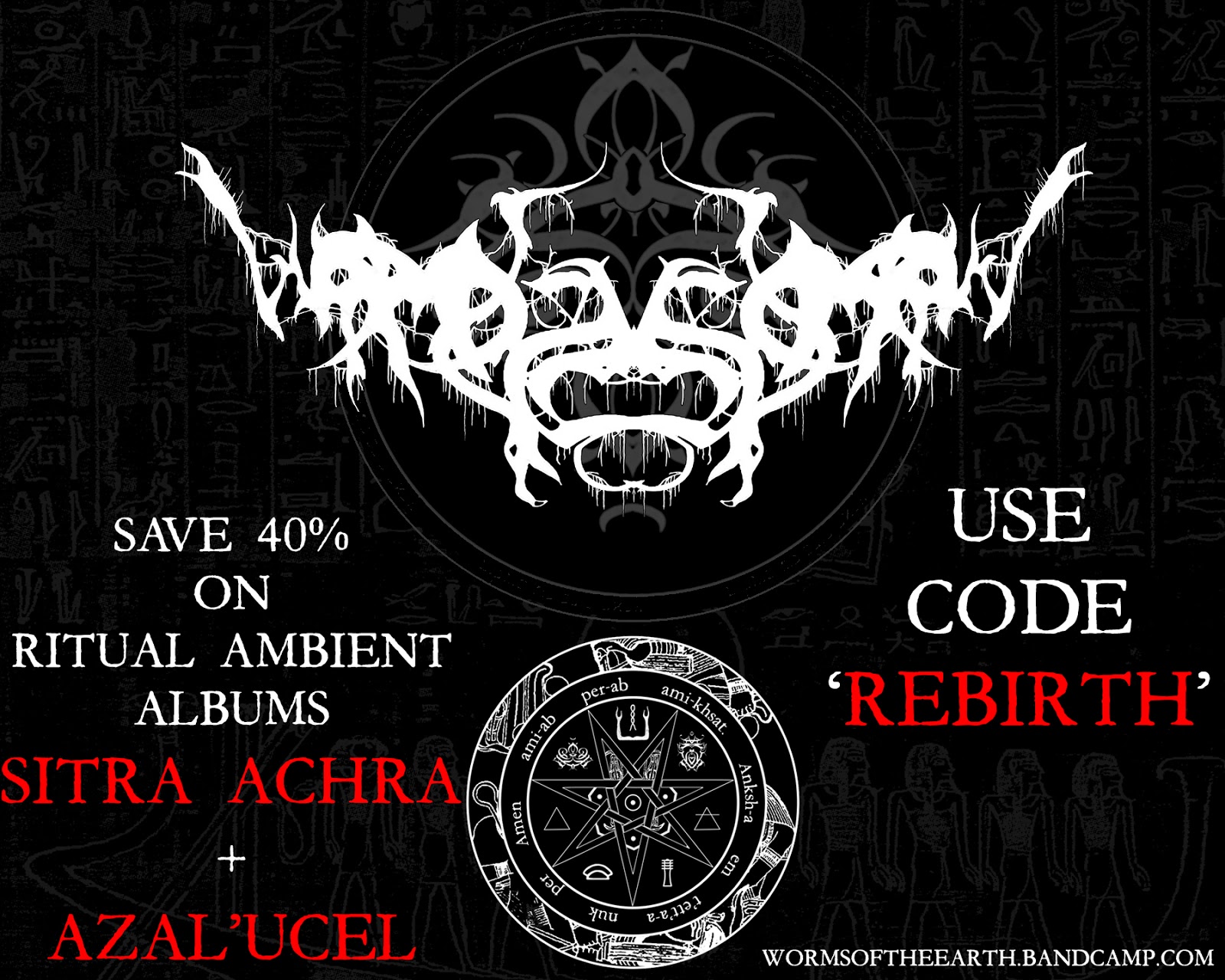
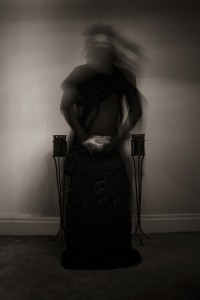 Dan: I’m a fan of many different types of music so it’s been difficult for me to stick to one particular sound. I also find that as a producer it greatly bolsters your abilities and keeps your creativity flowing to write different styles of music. And frankly, it’s just boring to write the same thing and the same sounds over and over. That said, I eventually settled on “ethno industrial & ritual ambient” to describe Worms of the Earth.
Dan: I’m a fan of many different types of music so it’s been difficult for me to stick to one particular sound. I also find that as a producer it greatly bolsters your abilities and keeps your creativity flowing to write different styles of music. And frankly, it’s just boring to write the same thing and the same sounds over and over. That said, I eventually settled on “ethno industrial & ritual ambient” to describe Worms of the Earth.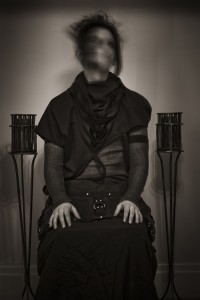 Dan: Hidden knowledge, wisdom. Magic. Basically the knowledge of our connection to and place within the universe, which has been lost over the ages. And the knowledge of how to be free from negative bindings, seen and unseen. When you’re a practicing magician (for lack of a less cheesy term), and you’ve achieved a level of awareness then you live magic. I can’t really explain it better than that. It’s not so much permeating my being as becoming aware of something that’s already there.
Dan: Hidden knowledge, wisdom. Magic. Basically the knowledge of our connection to and place within the universe, which has been lost over the ages. And the knowledge of how to be free from negative bindings, seen and unseen. When you’re a practicing magician (for lack of a less cheesy term), and you’ve achieved a level of awareness then you live magic. I can’t really explain it better than that. It’s not so much permeating my being as becoming aware of something that’s already there.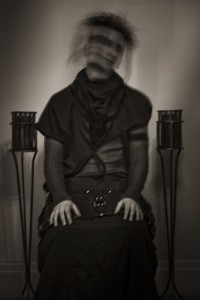 Dan: To explain qliphoth first we have to talk about the Tree of Life in Kaballah. Now I’m not going to go into that because that’s a colossal thing on it’s own and is generally interpreted in a few different ways to symbolize myriad profound concepts (as in, the universe, man’s place in the universe, etc). But to keep it extremely concise: the Tree of Life is a map of 10 spheres, which represent “traits of god”: wisdom, benevolence, and so forth – basically, useful, positive traits. Qliphoth is the inverse of the Tree of Life, and the realm is called Sitra Achra. In this realm the 10 spheres represent “the failures of god”, which are basically chaotic and negative traits. Not EVIL per se, but either purely negative traits or good traits which get corrupted / become detrimental; these traits can cause us to lose willpower, creativity, connection with the divine source, etc. Again, the qliphoth can be viewed in a number of ways, but that’s the basics as it relates to the album. In short, when working with the qliphoth you are confronting the shadow; all the negative traits you carry and are connected to.
Dan: To explain qliphoth first we have to talk about the Tree of Life in Kaballah. Now I’m not going to go into that because that’s a colossal thing on it’s own and is generally interpreted in a few different ways to symbolize myriad profound concepts (as in, the universe, man’s place in the universe, etc). But to keep it extremely concise: the Tree of Life is a map of 10 spheres, which represent “traits of god”: wisdom, benevolence, and so forth – basically, useful, positive traits. Qliphoth is the inverse of the Tree of Life, and the realm is called Sitra Achra. In this realm the 10 spheres represent “the failures of god”, which are basically chaotic and negative traits. Not EVIL per se, but either purely negative traits or good traits which get corrupted / become detrimental; these traits can cause us to lose willpower, creativity, connection with the divine source, etc. Again, the qliphoth can be viewed in a number of ways, but that’s the basics as it relates to the album. In short, when working with the qliphoth you are confronting the shadow; all the negative traits you carry and are connected to.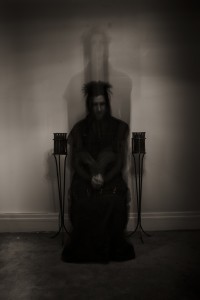 Dan: Absolutely not, I love dark ambient. It’s a core component of my sound and there are plenty of elements of it in the new material. There will be a couple of dark ambient interlude tracks and I’m hoping to close the album with a fully ambient track. I tend to work in cycles; I’ll do some beat-oriented material and then when I’ve written that album and exhausted my creativity I’ll work on a dark ambient album to bring the fire back and get inspired in a different way. I like to use different genres to explore alternate facets of a topic. I don’t know exactly what the future holds, but at a minimum there will always be elements of dark ambient in my music and perhaps more full length dark ambient albums. I’d love to do a full length album of ancient Egyptian themed/sounding ambient.
Dan: Absolutely not, I love dark ambient. It’s a core component of my sound and there are plenty of elements of it in the new material. There will be a couple of dark ambient interlude tracks and I’m hoping to close the album with a fully ambient track. I tend to work in cycles; I’ll do some beat-oriented material and then when I’ve written that album and exhausted my creativity I’ll work on a dark ambient album to bring the fire back and get inspired in a different way. I like to use different genres to explore alternate facets of a topic. I don’t know exactly what the future holds, but at a minimum there will always be elements of dark ambient in my music and perhaps more full length dark ambient albums. I’d love to do a full length album of ancient Egyptian themed/sounding ambient.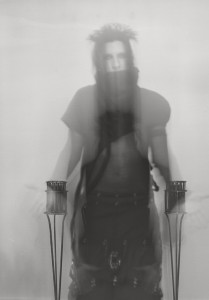 Dan: Most likely yes. I still absolutely love dark ambient and listen to it frequently. In the last few months I haven’t kept up with new releases much, but that’s a thing that ebbs and flows with me. I love having an outlet to use to both write about and promote good music. It’s hard for me to find time to run a zine, write reviews, do interviews, etc., but if I can find time then I’ll likely continue.
Dan: Most likely yes. I still absolutely love dark ambient and listen to it frequently. In the last few months I haven’t kept up with new releases much, but that’s a thing that ebbs and flows with me. I love having an outlet to use to both write about and promote good music. It’s hard for me to find time to run a zine, write reviews, do interviews, etc., but if I can find time then I’ll likely continue.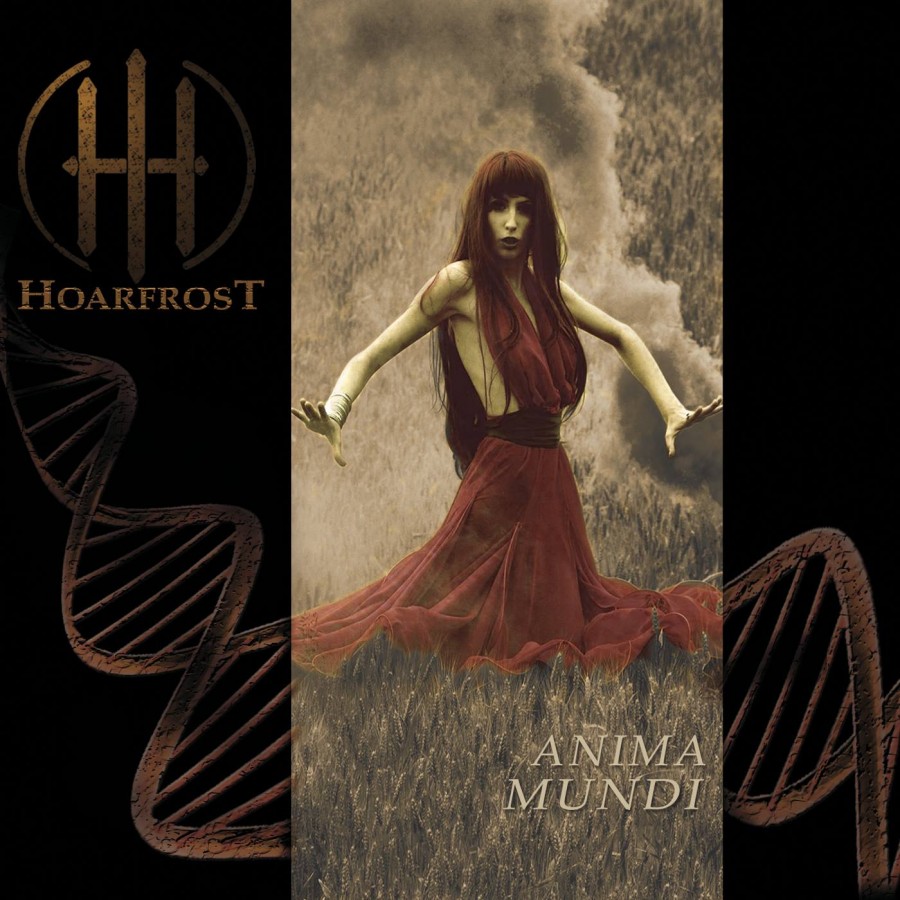
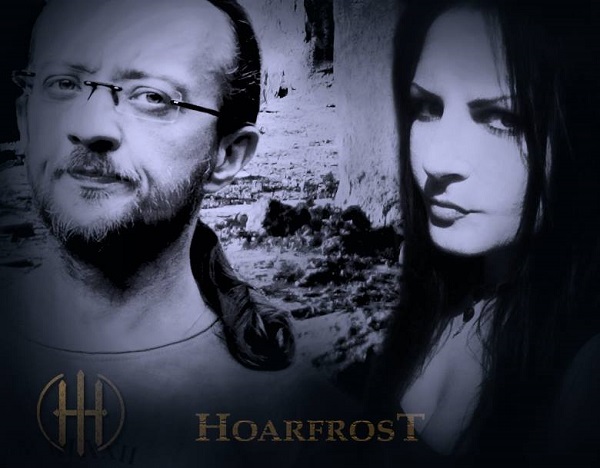 Rafał: Before I have started to compose as Hoarfrost, I have been engaged in music, where lyrics have played an important role. This I missed in Hoarfrost from its beginning, but it was difficult for me to find the appropriate vocalist. I met Hekte Zaren, when I was finishing the stuff for Puppets Of Divine Coroner. The compositions were almost ready and there was not much space for the vocals. This is why Hekte appeared only in a few of the tracks. When we were working on Anima Mundi we felt comfortable, because the music was created intentionally for the vocals.
Rafał: Before I have started to compose as Hoarfrost, I have been engaged in music, where lyrics have played an important role. This I missed in Hoarfrost from its beginning, but it was difficult for me to find the appropriate vocalist. I met Hekte Zaren, when I was finishing the stuff for Puppets Of Divine Coroner. The compositions were almost ready and there was not much space for the vocals. This is why Hekte appeared only in a few of the tracks. When we were working on Anima Mundi we felt comfortable, because the music was created intentionally for the vocals.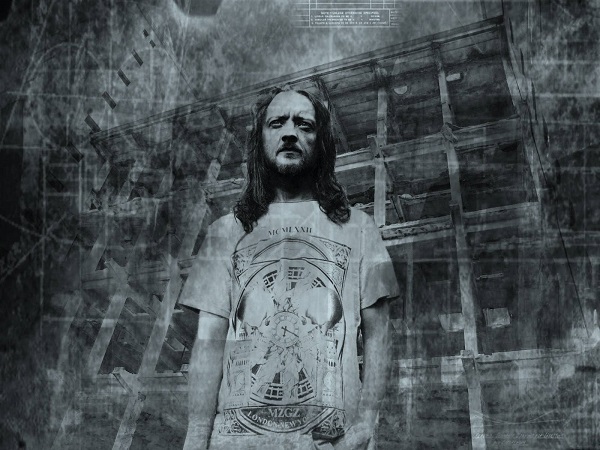 Michael: Who are some of the strongest influences on your music? Which were your favorite bands from your formative years?
Michael: Who are some of the strongest influences on your music? Which were your favorite bands from your formative years?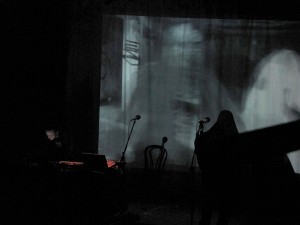 Michael: Do you ever perform live? What would be the perfect line-up for you?
Michael: Do you ever perform live? What would be the perfect line-up for you?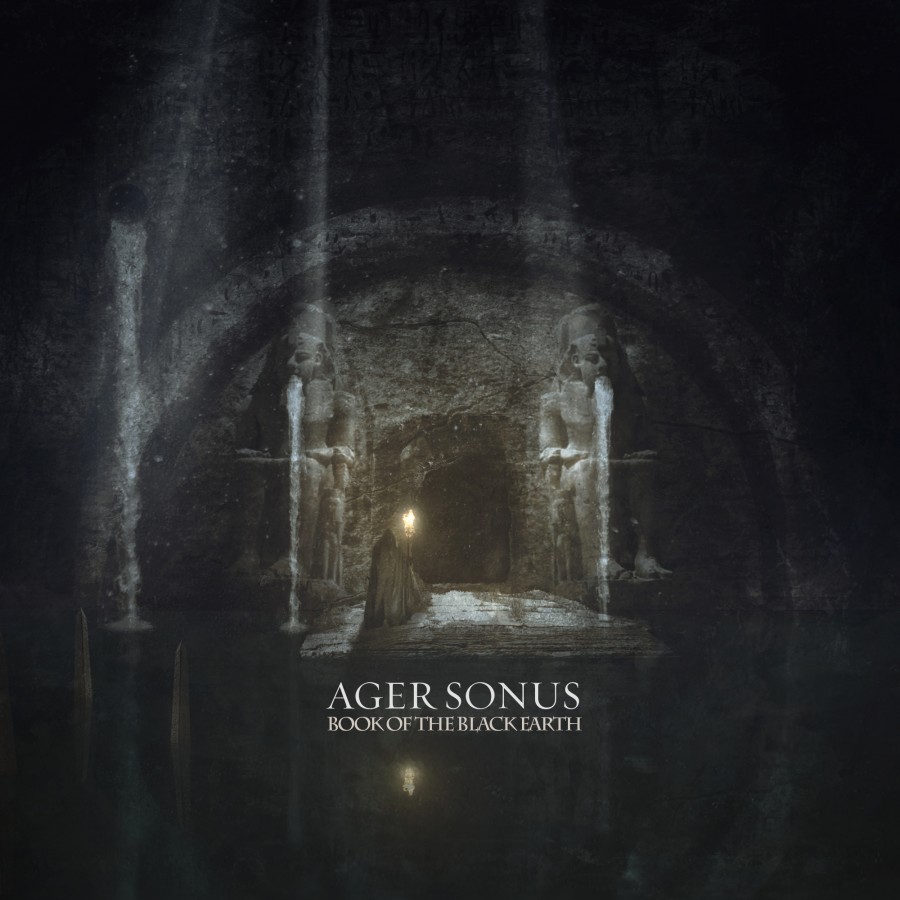
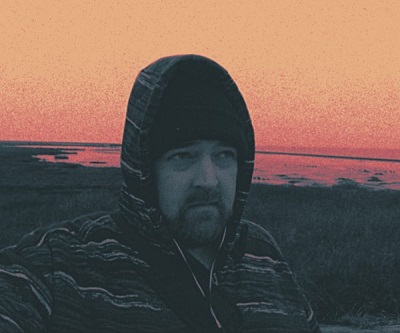 But the release of this album has shown me that there was no need for those doubts. I was very suprised when people started to give me positive feedback, were it as comments under the videos Cryo Chamber uploaded to Youtube or messages/posts on Facebook. It has been a very positive experience so far, this is definitely the most feedback I have ever gotten, also of course due to the the huge amount of fans Cryo Chamber has. I noticed that this genre really is a big family, I have not seen fighting by fans like we see in many other genres, so I definitely appreciate it a lot that the CC fans have such an open mind and gave me a warm welcome. The reviews so far have also been great, even though so far there are only two reviews, more might be coming.
But the release of this album has shown me that there was no need for those doubts. I was very suprised when people started to give me positive feedback, were it as comments under the videos Cryo Chamber uploaded to Youtube or messages/posts on Facebook. It has been a very positive experience so far, this is definitely the most feedback I have ever gotten, also of course due to the the huge amount of fans Cryo Chamber has. I noticed that this genre really is a big family, I have not seen fighting by fans like we see in many other genres, so I definitely appreciate it a lot that the CC fans have such an open mind and gave me a warm welcome. The reviews so far have also been great, even though so far there are only two reviews, more might be coming.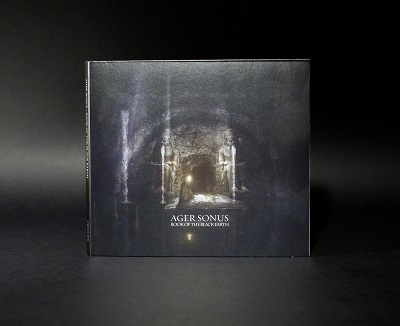 Thomas: I have been following the genre since around 2007/2008, after S.T.A.L.K.E.R. – Shadow of Chernobyl was released, one of my favorite video-games. The music of that game was one of the many reasons why that game was so amazing and it had this amazing atmosphere that was, and still is, one of the best in gaming. I did not know the term “dark ambient” or “ambient” even as a genre, so once I had that and started to look into it a whole world of musical marvel unfolded in front of me.
Thomas: I have been following the genre since around 2007/2008, after S.T.A.L.K.E.R. – Shadow of Chernobyl was released, one of my favorite video-games. The music of that game was one of the many reasons why that game was so amazing and it had this amazing atmosphere that was, and still is, one of the best in gaming. I did not know the term “dark ambient” or “ambient” even as a genre, so once I had that and started to look into it a whole world of musical marvel unfolded in front of me.
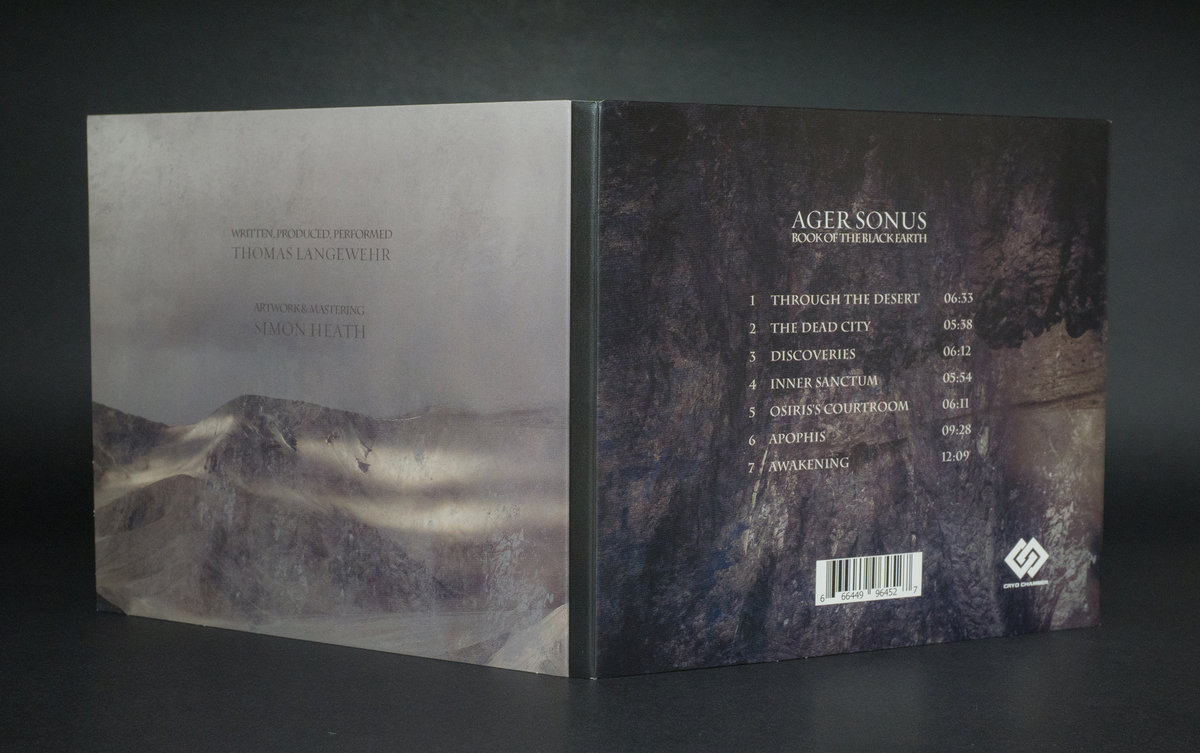
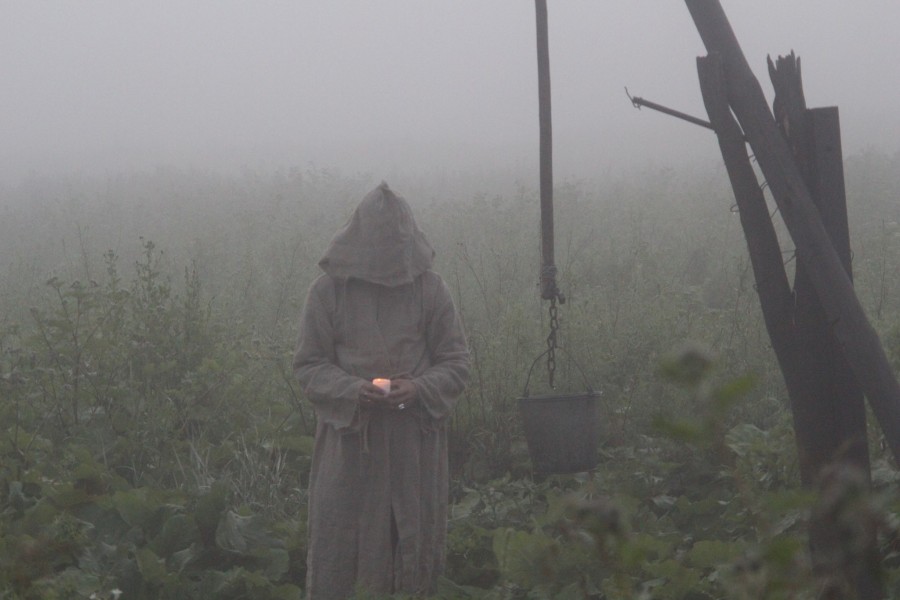

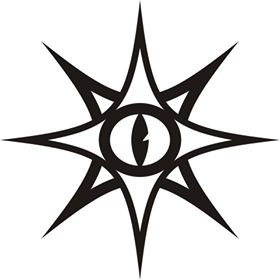 Dmitriy: Hi! Dark ambient and similar music attracted me for a long time. The first thought about creating a music label came to me about 2-3 years ago. I was in correspondence with Halgrath and a few other performers. At that time, Halgrath was not published on Cryo Chamber. But a clear concept at that moment was not developed. Only a year later, the idea came to me again. We thought – what’s missing, in our view, for the presentation of the album and developed further on this style, as a sound and visual component of our releases.
Dmitriy: Hi! Dark ambient and similar music attracted me for a long time. The first thought about creating a music label came to me about 2-3 years ago. I was in correspondence with Halgrath and a few other performers. At that time, Halgrath was not published on Cryo Chamber. But a clear concept at that moment was not developed. Only a year later, the idea came to me again. We thought – what’s missing, in our view, for the presentation of the album and developed further on this style, as a sound and visual component of our releases.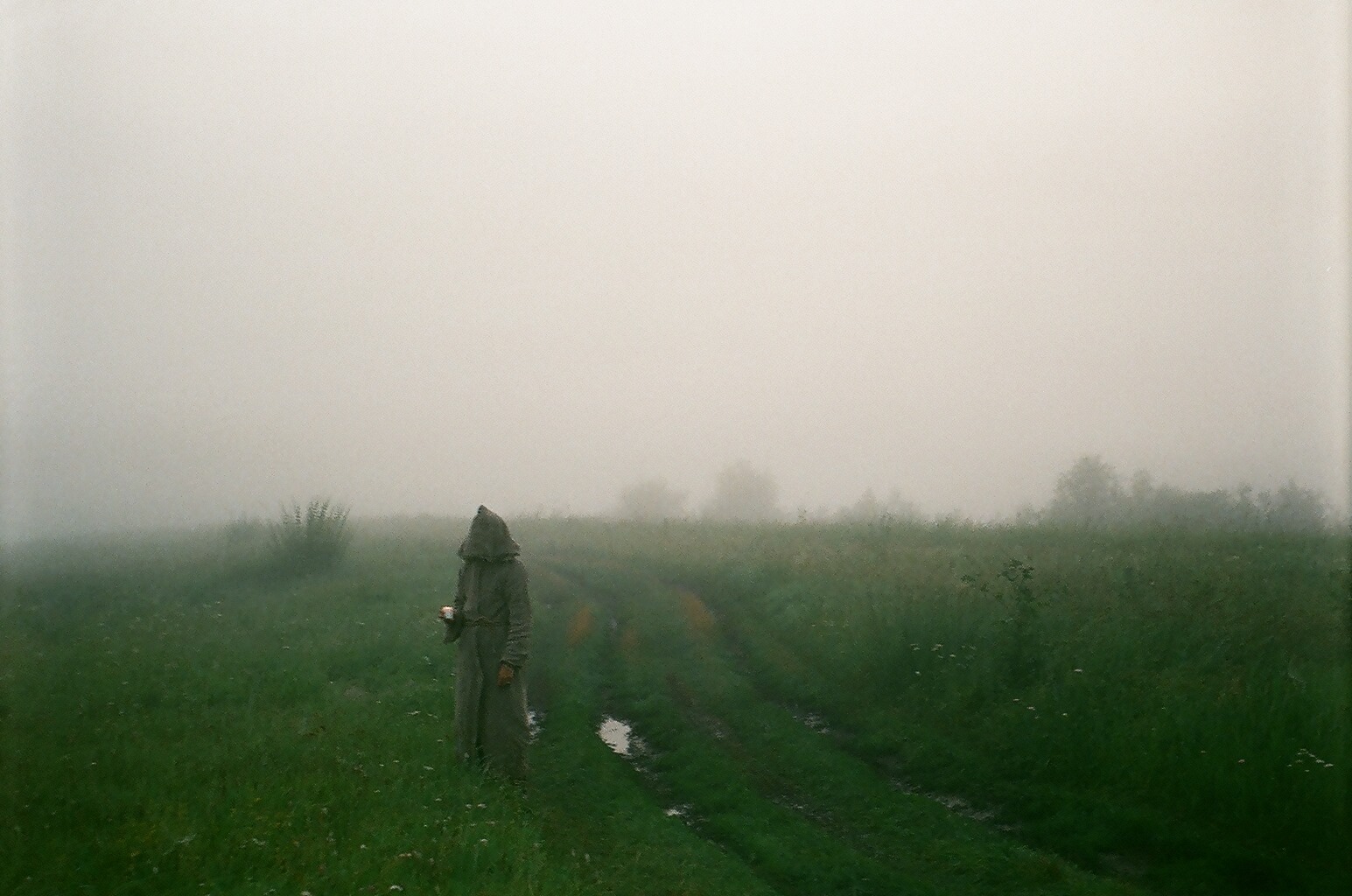
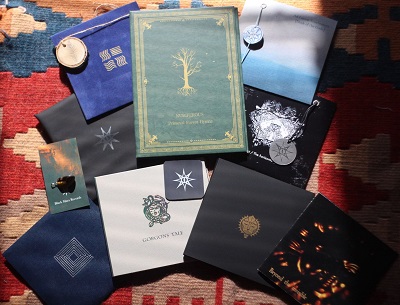 Michael: The Dark Side, by Ugasanie, was the first record to catch my eye on Black Mara, as I’ve been a huge Ugasanie fan for several years now. It seems like his album was a great way to get the word spread around about Black Mara. Are you friends outside of the musical world?
Michael: The Dark Side, by Ugasanie, was the first record to catch my eye on Black Mara, as I’ve been a huge Ugasanie fan for several years now. It seems like his album was a great way to get the word spread around about Black Mara. Are you friends outside of the musical world?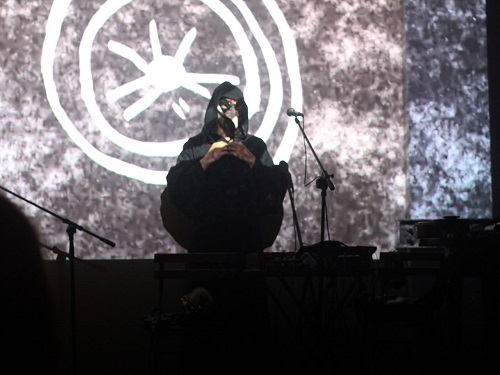 Dmitriy: Ad lucem Tenebratum (Ad Lux Tenebrea) is quite an old and well-known project. They are considered to be one of the pioneers of the genre in Russia. They have published music since 2003. First, material for publication must be conceptually interesting. Secondly, it is very important to the quality of material to release. And third, music should affect the imagination and emotions, like I said earlier.
Dmitriy: Ad lucem Tenebratum (Ad Lux Tenebrea) is quite an old and well-known project. They are considered to be one of the pioneers of the genre in Russia. They have published music since 2003. First, material for publication must be conceptually interesting. Secondly, it is very important to the quality of material to release. And third, music should affect the imagination and emotions, like I said earlier.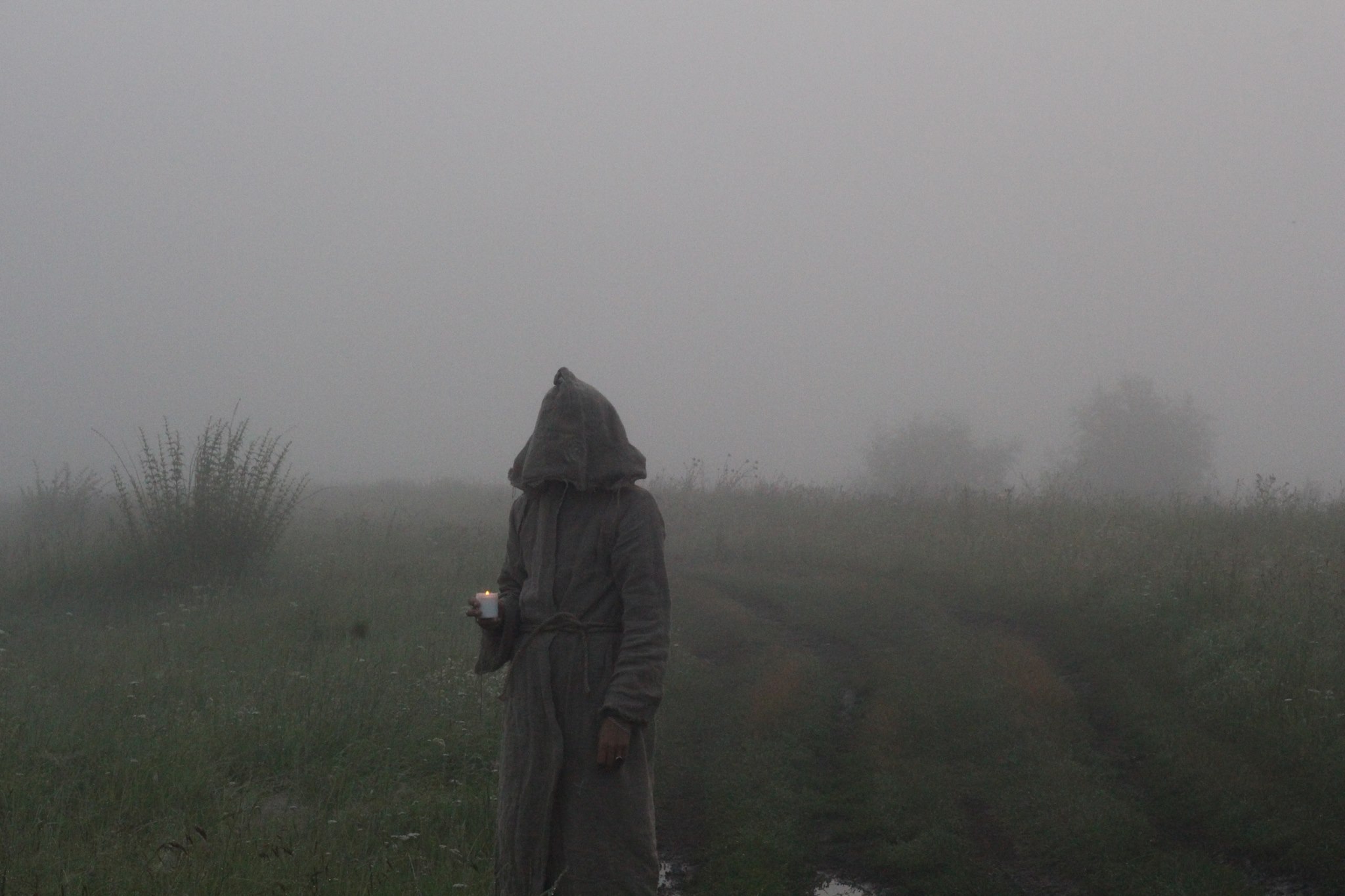
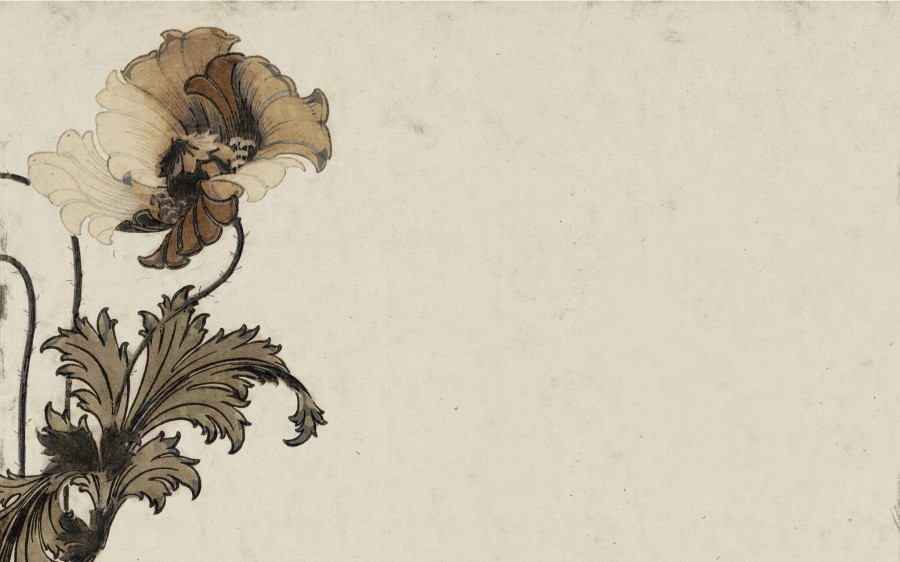
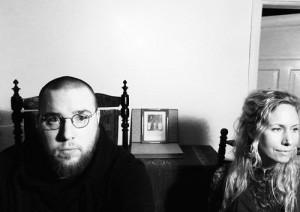 Pär Boström has been involved in a ton of projects since the rejuvenation of his musical career in 2015. We’ve seen two Kammarheit albums on Cyclic Law (The Nest and Unearthed 2000-2002), the second release under the Cities Last Broadcast moniker on Cryo Chamber, the founding of the new label Hypnagoga Press with his sister Åsa Boström, the debut of the siblings musical project Hymnambulae and the new project Altarmang between Pär and Kenneth Hansson which released the debut Void at the end of 2016. Add to that Pär’s involvement in the collaborative albums Onyx and Echo along with Atrium Carceri and Apocryphos and its easy to see that there are a ton of things happening, as well as the prospects of plenty more to come. So in July of 2016 I got in contact with Pär and Åsa to ask the siblings some questions about their many projects happening in relation to the dark ambient scene.
Pär Boström has been involved in a ton of projects since the rejuvenation of his musical career in 2015. We’ve seen two Kammarheit albums on Cyclic Law (The Nest and Unearthed 2000-2002), the second release under the Cities Last Broadcast moniker on Cryo Chamber, the founding of the new label Hypnagoga Press with his sister Åsa Boström, the debut of the siblings musical project Hymnambulae and the new project Altarmang between Pär and Kenneth Hansson which released the debut Void at the end of 2016. Add to that Pär’s involvement in the collaborative albums Onyx and Echo along with Atrium Carceri and Apocryphos and its easy to see that there are a ton of things happening, as well as the prospects of plenty more to come. So in July of 2016 I got in contact with Pär and Åsa to ask the siblings some questions about their many projects happening in relation to the dark ambient scene.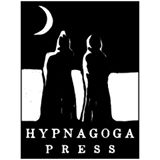 Pär: It’s something we’ve talked about for at least a decade now. We both wanted to build a place that could hold all our projects, from art prints to music to children’s books and poetry, with focus on beautifully packaged limited editions. We’re both nerds when it comes to packages and design and we need something like this to challenge ourselves.
Pär: It’s something we’ve talked about for at least a decade now. We both wanted to build a place that could hold all our projects, from art prints to music to children’s books and poetry, with focus on beautifully packaged limited editions. We’re both nerds when it comes to packages and design and we need something like this to challenge ourselves.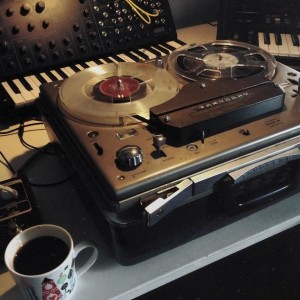 until that night I had no name for it, no concept or any real inspiration. If I remember correctly it took almost a year until I continued to make the other five albums from the Unearthed box. By then I’d started using other software and had a bit better understanding about what I wanted to make and how to do it, although I remained totally ignorant about sound quality and proper mixing techniques. I had promised myself that Kammarheit would be a project about recording atmosphere and not to worry so much about how to make actual songs. All the albums of Unearthed were made to keep me company during my insomnia. I had no plans to release any of them, I just wanted somewhere to go, something that could help me explore the inner worlds that I was obsessed about. I was depressed, numb. I didn’t feel much during the days but at night I could drift away somewhere and that really helped. I rarely listen to any of the albums today but when I do I feel a strong sense of gratitude. I don’t know what would have happened to me if I hadn’t made that music. Frederic wanted to release the albums on Cyclic Law many years ago but I wasn’t ready. It took a lot of convincing, but I’m glad they got a proper release at last. They had already been available in dark corners of the Internet for years, so why not make something proper of it. Even if the material is very uneven and in my opinion not very good at all, it shows where I’ve been and how Kammarheit started.
until that night I had no name for it, no concept or any real inspiration. If I remember correctly it took almost a year until I continued to make the other five albums from the Unearthed box. By then I’d started using other software and had a bit better understanding about what I wanted to make and how to do it, although I remained totally ignorant about sound quality and proper mixing techniques. I had promised myself that Kammarheit would be a project about recording atmosphere and not to worry so much about how to make actual songs. All the albums of Unearthed were made to keep me company during my insomnia. I had no plans to release any of them, I just wanted somewhere to go, something that could help me explore the inner worlds that I was obsessed about. I was depressed, numb. I didn’t feel much during the days but at night I could drift away somewhere and that really helped. I rarely listen to any of the albums today but when I do I feel a strong sense of gratitude. I don’t know what would have happened to me if I hadn’t made that music. Frederic wanted to release the albums on Cyclic Law many years ago but I wasn’t ready. It took a lot of convincing, but I’m glad they got a proper release at last. They had already been available in dark corners of the Internet for years, so why not make something proper of it. Even if the material is very uneven and in my opinion not very good at all, it shows where I’ve been and how Kammarheit started.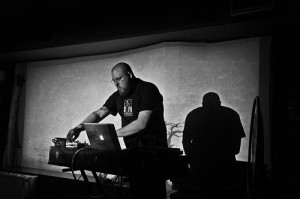 Michael: How much different is the creation process now with modern DAWs, do you like the new systems or do you prefer the old way?
Michael: How much different is the creation process now with modern DAWs, do you like the new systems or do you prefer the old way?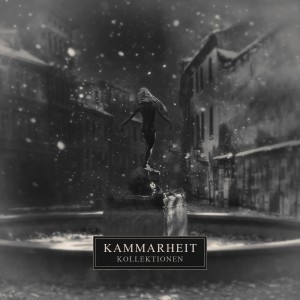 my albums and he has come very close to how I see the music myself. In the past it felt more important to not be too specific. I wanted to leave a lot of space for the listener’s own imagination but even if I did include more images the listener would probably still want to go to their own places instead. In the end I think the music will always speak best for itself.
my albums and he has come very close to how I see the music myself. In the past it felt more important to not be too specific. I wanted to leave a lot of space for the listener’s own imagination but even if I did include more images the listener would probably still want to go to their own places instead. In the end I think the music will always speak best for itself.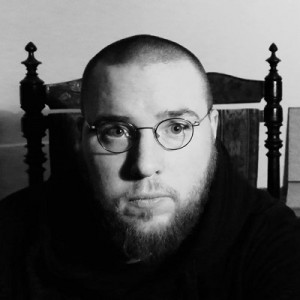 Pär: I’m indeed a David Lynch fan. I especially love Twin Peaks and watch it on a regular basis. I also enjoy his music and writing. The Music Of Hildegard von Bingen album he did with Jocelyn Montgomery and his album The Air Is On Fire is something I often go back to. I love reading and I love collecting beautiful books with old illustrations but I haven’t read much lately. I’ve been busy with music and writing and when I get some free time I want to either take notes while listening to music I work on or just rest my head in a quiet space. At the moment I’m reading The Club Dumas again, the book that lead to the movie The Ninth Gate and from time to time I read books on printmaking and a biography about Tove Jansson who wrote the Moomin books. There are unfinished books laying everywhere and I often just pick one up and read a few pages before I do something else.
Pär: I’m indeed a David Lynch fan. I especially love Twin Peaks and watch it on a regular basis. I also enjoy his music and writing. The Music Of Hildegard von Bingen album he did with Jocelyn Montgomery and his album The Air Is On Fire is something I often go back to. I love reading and I love collecting beautiful books with old illustrations but I haven’t read much lately. I’ve been busy with music and writing and when I get some free time I want to either take notes while listening to music I work on or just rest my head in a quiet space. At the moment I’m reading The Club Dumas again, the book that lead to the movie The Ninth Gate and from time to time I read books on printmaking and a biography about Tove Jansson who wrote the Moomin books. There are unfinished books laying everywhere and I often just pick one up and read a few pages before I do something else. Åsa: Orgelhuset is loosely based on improvisations we’ve done for the past seven years. For this album Pär has been the technician, using his skills to figure out how to musically translate conceptual designs we’ve outlined together – alongside visual, text-based and philosophical concepts. When we’re in the studio we tend to work quickly. Over the years, having listened to the same music, been exposed to the same influences, developed similar preferences, as well as several differences of course, we’ve developed an understanding for each others creative worlds and created a common language that’s very useful when collaborating. In the studio we have an ongoing dialogue, often referring to our other projects in progress and the overall plans for what to publish on Hypnagoga Press. I have a history of playing the violin and with spoken word and dance. Voice has been my main instrument, as an extension of my writing. Onwards it will be interesting to see how our collaboration through Hymnambulae will inform my overall creative practice – as an artist, writer and composer.
Åsa: Orgelhuset is loosely based on improvisations we’ve done for the past seven years. For this album Pär has been the technician, using his skills to figure out how to musically translate conceptual designs we’ve outlined together – alongside visual, text-based and philosophical concepts. When we’re in the studio we tend to work quickly. Over the years, having listened to the same music, been exposed to the same influences, developed similar preferences, as well as several differences of course, we’ve developed an understanding for each others creative worlds and created a common language that’s very useful when collaborating. In the studio we have an ongoing dialogue, often referring to our other projects in progress and the overall plans for what to publish on Hypnagoga Press. I have a history of playing the violin and with spoken word and dance. Voice has been my main instrument, as an extension of my writing. Onwards it will be interesting to see how our collaboration through Hymnambulae will inform my overall creative practice – as an artist, writer and composer.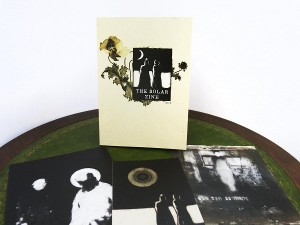 Åsa: This summer I’m exhibiting art in Italy and the US. Together with a team of consultants I’m also working on scaling up a program for writing after trauma called Write Your Self, a program I’m the owner for – a big creative project for me. Besides this I want to spend as much time in the studio as possible. In my own art-making I’m currently experimenting with film-making, and in my writing I’m moving between several text projects, completing a collection of poems, a children’s book and a novel. After all these years of traveling I’m enjoying being still and spending time with collected supplies and impressions. When living in France a couple of years ago I studied paper-making. It would be nice to equip my home studio for that.
Åsa: This summer I’m exhibiting art in Italy and the US. Together with a team of consultants I’m also working on scaling up a program for writing after trauma called Write Your Self, a program I’m the owner for – a big creative project for me. Besides this I want to spend as much time in the studio as possible. In my own art-making I’m currently experimenting with film-making, and in my writing I’m moving between several text projects, completing a collection of poems, a children’s book and a novel. After all these years of traveling I’m enjoying being still and spending time with collected supplies and impressions. When living in France a couple of years ago I studied paper-making. It would be nice to equip my home studio for that.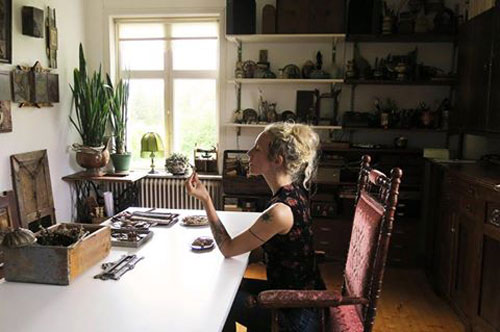 Åsa: Thank you. Difficult question, still getting used to not being a complete nomad. Perhaps something by French symbolist Gustave Moreau, like The Apparition (love his museum in Paris); or Le Silence by Lucian Levy-Durmer (hanging at Musée D’Orsey); or something by American abstract painter Rebecca Crowell. I took a workshop with her in Ireland a couple of years ago; she works with oil, cold wax and pigments, making multi-layered and heavy-textured paintings with both simplicity and complexity to them. I’m very selective with what I bring into my home, it has to really add to the space – presence, spirit, beauty, complexity that can grow over time. Or perhaps traditional Japanese screens. Something that I could reflect upon while exploring where to take my own art-making next.
Åsa: Thank you. Difficult question, still getting used to not being a complete nomad. Perhaps something by French symbolist Gustave Moreau, like The Apparition (love his museum in Paris); or Le Silence by Lucian Levy-Durmer (hanging at Musée D’Orsey); or something by American abstract painter Rebecca Crowell. I took a workshop with her in Ireland a couple of years ago; she works with oil, cold wax and pigments, making multi-layered and heavy-textured paintings with both simplicity and complexity to them. I’m very selective with what I bring into my home, it has to really add to the space – presence, spirit, beauty, complexity that can grow over time. Or perhaps traditional Japanese screens. Something that I could reflect upon while exploring where to take my own art-making next.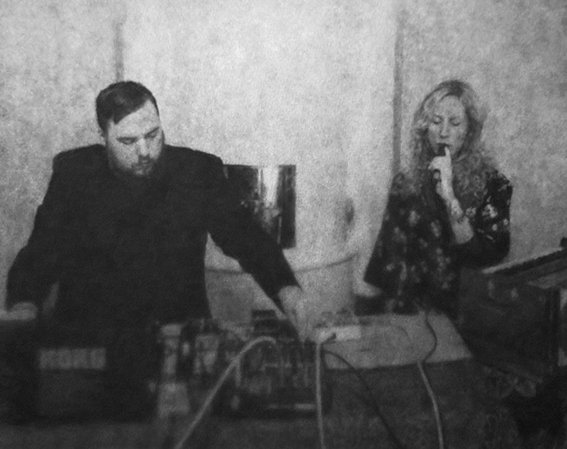 Michael: Will you plan to work with more guest musicians in the future? Any particular instruments you dream of collaborating with?
Michael: Will you plan to work with more guest musicians in the future? Any particular instruments you dream of collaborating with?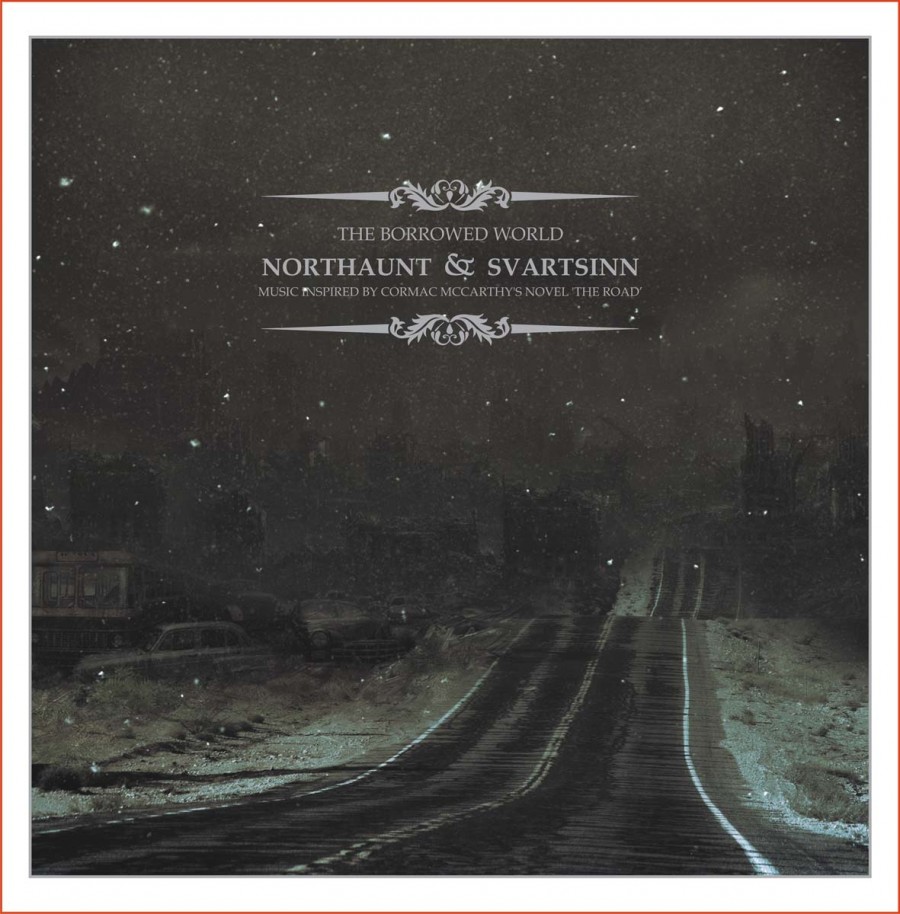
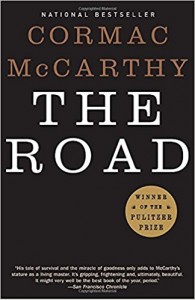 The Road, a post-apocalyptic novel by Cormac McCarthy, has lent inspiration to a number of dark ambient players. Yet, no where more strongly or directly than on the instant classic The Borrowed World, a split by Northaunt and Svartsinn.
The Road, a post-apocalyptic novel by Cormac McCarthy, has lent inspiration to a number of dark ambient players. Yet, no where more strongly or directly than on the instant classic The Borrowed World, a split by Northaunt and Svartsinn.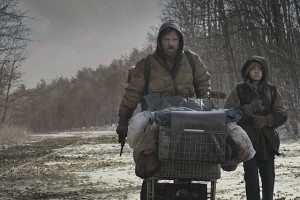 To understand what The Borrowed World is all about we must first understand the common thread between the two artists. The Road, a post-apocalyptic novel by the renowned author Cormac McCarthy. The Road follows a man and his young son through a world that is lost. Devastation presents itself to them at every turn. The struggle to wake the next morning and keep fighting for life is existentially hard for them to grasp.
To understand what The Borrowed World is all about we must first understand the common thread between the two artists. The Road, a post-apocalyptic novel by the renowned author Cormac McCarthy. The Road follows a man and his young son through a world that is lost. Devastation presents itself to them at every turn. The struggle to wake the next morning and keep fighting for life is existentially hard for them to grasp.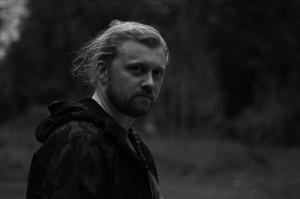 Yet, as we move into the second half of “If Only My Heart Were Stone”, the soundscapes take an emotional turn. We move from dull gray vistas into the mind of the protagonist. The father struggles with a key dilemma throughout the novel: Is it better to commit a murder / suicide and end the suffering of himself and his child, or should they continue to fight for life, even if there seems to be no chance of respite. Northaunt makes it possible for us to feel those emotions. “If Only My Heart Were Stone” moves from those barren soundscapes into his most introspective and emotional work to date.
Yet, as we move into the second half of “If Only My Heart Were Stone”, the soundscapes take an emotional turn. We move from dull gray vistas into the mind of the protagonist. The father struggles with a key dilemma throughout the novel: Is it better to commit a murder / suicide and end the suffering of himself and his child, or should they continue to fight for life, even if there seems to be no chance of respite. Northaunt makes it possible for us to feel those emotions. “If Only My Heart Were Stone” moves from those barren soundscapes into his most introspective and emotional work to date.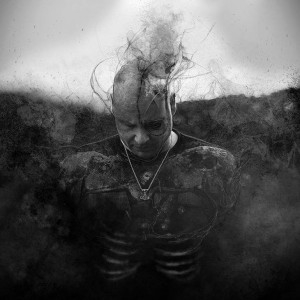 Svartsinn opts to incorporate a few samples from the movie adaptation of the novel into his track. We hear the father describe those last moments with his wife. Then, moments later, we hear the son crying out, “Papa! Papa!” in a sickly heart-wrenching whimper. As the last major events of the album, these clips tear at the heart, leaving the listener in a sullen state of mind.
Svartsinn opts to incorporate a few samples from the movie adaptation of the novel into his track. We hear the father describe those last moments with his wife. Then, moments later, we hear the son crying out, “Papa! Papa!” in a sickly heart-wrenching whimper. As the last major events of the album, these clips tear at the heart, leaving the listener in a sullen state of mind.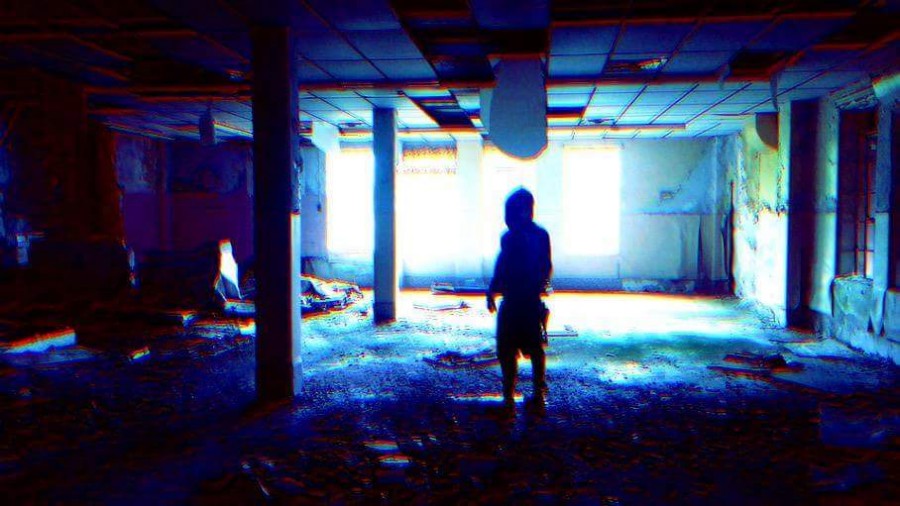

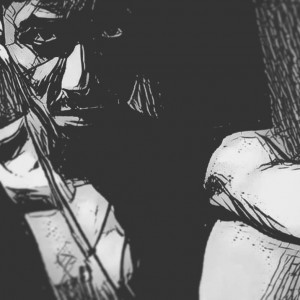 Randal: As far as style goes, not exactly. We all wanted to bring in our distinct styles of music to the album, to give each “chapter” a musical theme, but we did want each experience to be very personal. So the similarities are there, but it was not intentional to make them. I suppose great minds think alike?
Randal: As far as style goes, not exactly. We all wanted to bring in our distinct styles of music to the album, to give each “chapter” a musical theme, but we did want each experience to be very personal. So the similarities are there, but it was not intentional to make them. I suppose great minds think alike?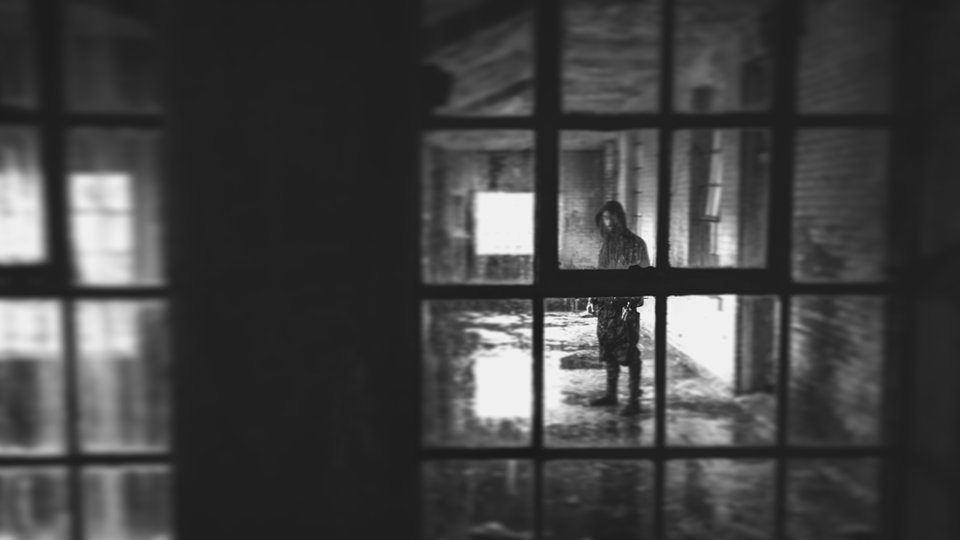
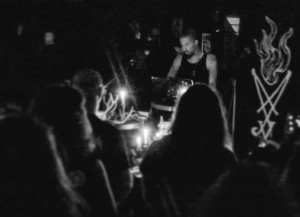 had found in her area of Oregon, and this was a big deal to me because this was during a time when I would hand out bones to the crowd during my sets. But when she gave it to me, I felt like I couldn’t take it. Not without giving something back that I felt was as valuable as what she was giving me. So I gave her a mostly intact deer spine that I used for my stage set up, and she then cried saying she couldn’t take it. This, in turn, made me cry a bit, because I thought it was so sweet and both of them were so kind and receptive to my work, so I gave her a hug and urged her to take it, because I cherish her act of giving me a gift like this. I also remember a child once, who was at an all-ages metal show that I opened for in this tiny coffee shop that was packed front to back, and outside, with people here to see the bands perform. During my opening set, the child was running in and out of the front door, which was to my left, and she was always staring at me. I thought it was adorable that she was so playful and happy. People would come up to the stage and take a bone, sit down and listen, chat among each other, and so on. And after my set, the mother of the child came to me with the child and told the child to take one of the bones as well. She giggled and ran between her mom’s legs to hide, so I handed the mother a large rib bone for the child. The child smiled and the mother told her to say thank you, and she did, which was the cutest thing I had ever seen. Moments like these, the interactions with people after my sets and during, seeing people on the floor meditating, even on their knees (that one was weird to see), make what I do feel all the more worth it. To truly give with my music, a feeling that can last years for individuals, to inspire and mold minds to reach for something new or something strange. To not follow the flock and find wonder on their own terms. To me, that’s the greatest feeling in the world to hear someone say that I’ve done that for them. And that feeling never gets old for me, just makes me want to keep trying harder and harder to move forward.
had found in her area of Oregon, and this was a big deal to me because this was during a time when I would hand out bones to the crowd during my sets. But when she gave it to me, I felt like I couldn’t take it. Not without giving something back that I felt was as valuable as what she was giving me. So I gave her a mostly intact deer spine that I used for my stage set up, and she then cried saying she couldn’t take it. This, in turn, made me cry a bit, because I thought it was so sweet and both of them were so kind and receptive to my work, so I gave her a hug and urged her to take it, because I cherish her act of giving me a gift like this. I also remember a child once, who was at an all-ages metal show that I opened for in this tiny coffee shop that was packed front to back, and outside, with people here to see the bands perform. During my opening set, the child was running in and out of the front door, which was to my left, and she was always staring at me. I thought it was adorable that she was so playful and happy. People would come up to the stage and take a bone, sit down and listen, chat among each other, and so on. And after my set, the mother of the child came to me with the child and told the child to take one of the bones as well. She giggled and ran between her mom’s legs to hide, so I handed the mother a large rib bone for the child. The child smiled and the mother told her to say thank you, and she did, which was the cutest thing I had ever seen. Moments like these, the interactions with people after my sets and during, seeing people on the floor meditating, even on their knees (that one was weird to see), make what I do feel all the more worth it. To truly give with my music, a feeling that can last years for individuals, to inspire and mold minds to reach for something new or something strange. To not follow the flock and find wonder on their own terms. To me, that’s the greatest feeling in the world to hear someone say that I’ve done that for them. And that feeling never gets old for me, just makes me want to keep trying harder and harder to move forward.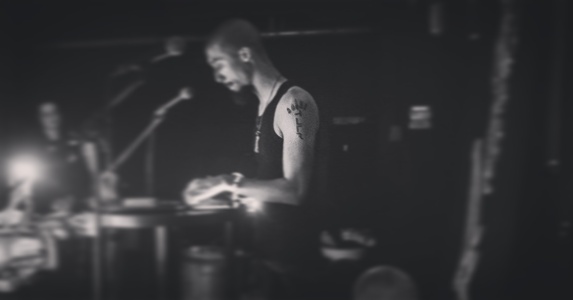 bathed in my own blood, in ashes, and burn candles with them, as well as incense from time to time. My set up started this way because my sets would start with an opening sermon where I could interact with others to take something to latch onto, something physical, to pour all their emotions and memories into during this, to pray to their Gods during the sermon, then the show would begin when the crowd felt invested. This sort of thing has stopped lately, as it has been troublesome lugging a suitcase of bones by myself for long distances, but after gaining a merch hand/stage hand, this has been put back into motion with creating a stage altar again. We’ll see if handing out bones becomes a thing again though…
bathed in my own blood, in ashes, and burn candles with them, as well as incense from time to time. My set up started this way because my sets would start with an opening sermon where I could interact with others to take something to latch onto, something physical, to pour all their emotions and memories into during this, to pray to their Gods during the sermon, then the show would begin when the crowd felt invested. This sort of thing has stopped lately, as it has been troublesome lugging a suitcase of bones by myself for long distances, but after gaining a merch hand/stage hand, this has been put back into motion with creating a stage altar again. We’ll see if handing out bones becomes a thing again though…